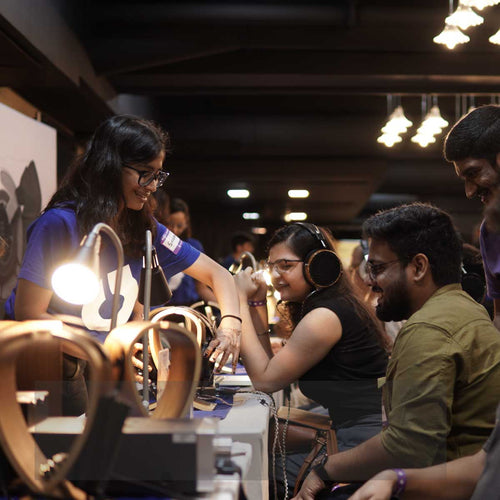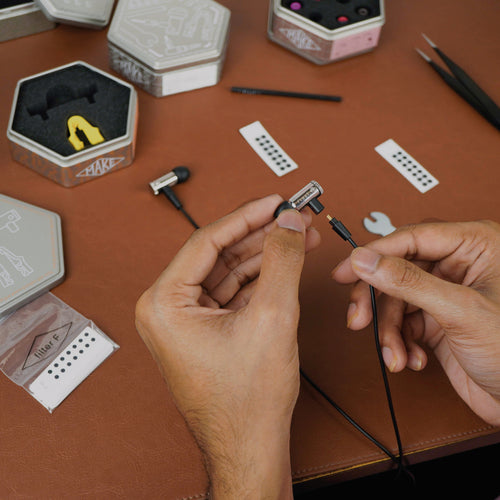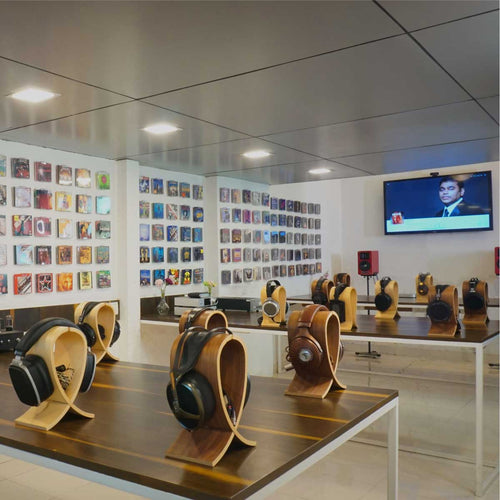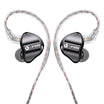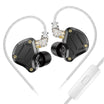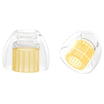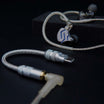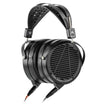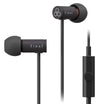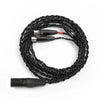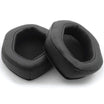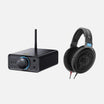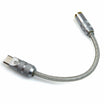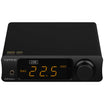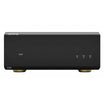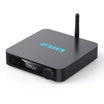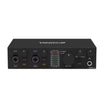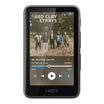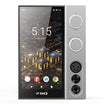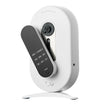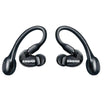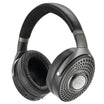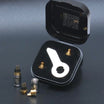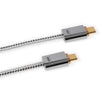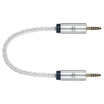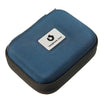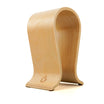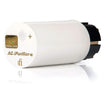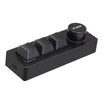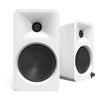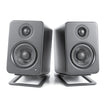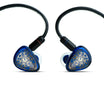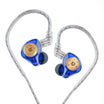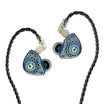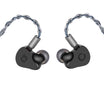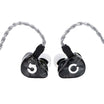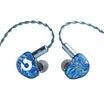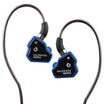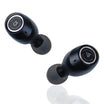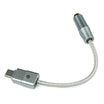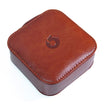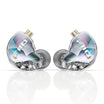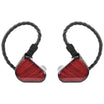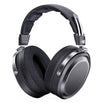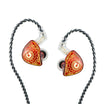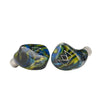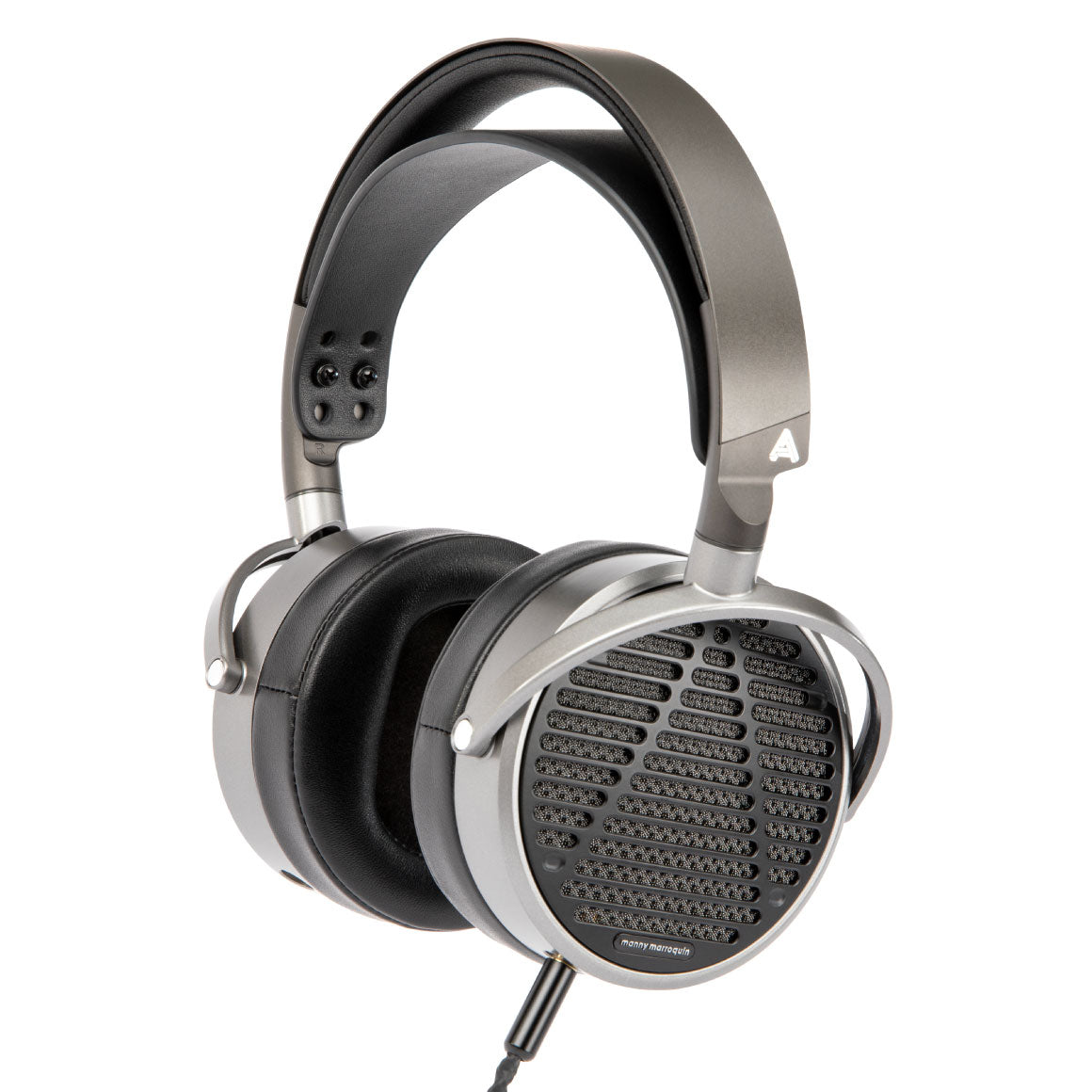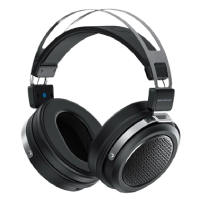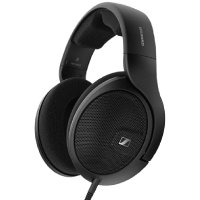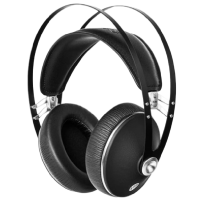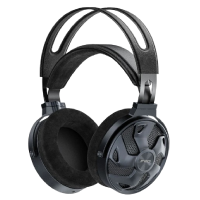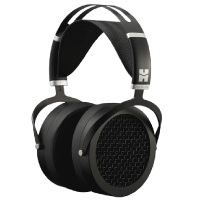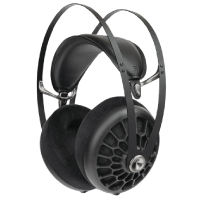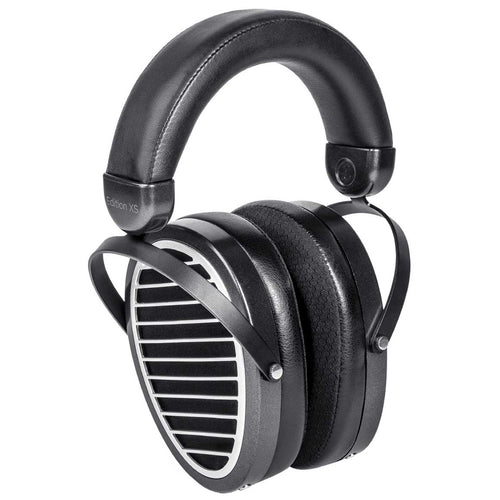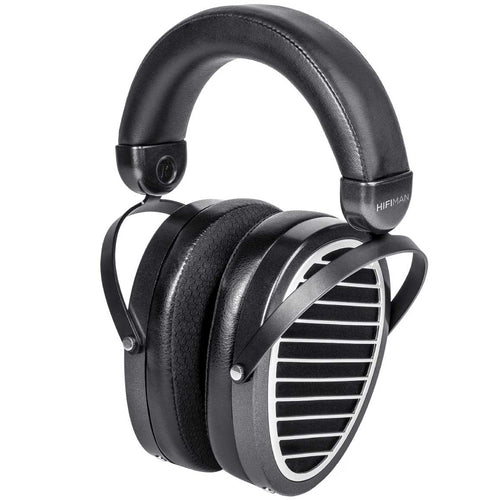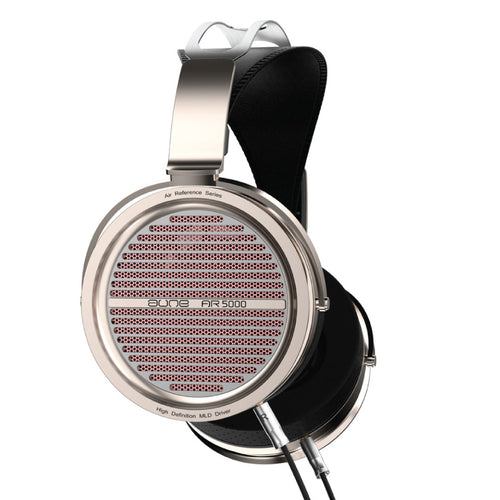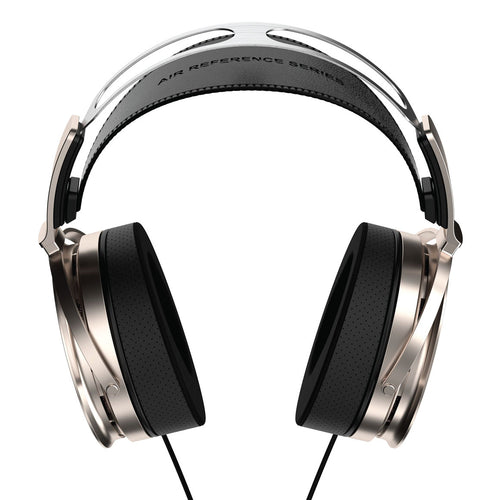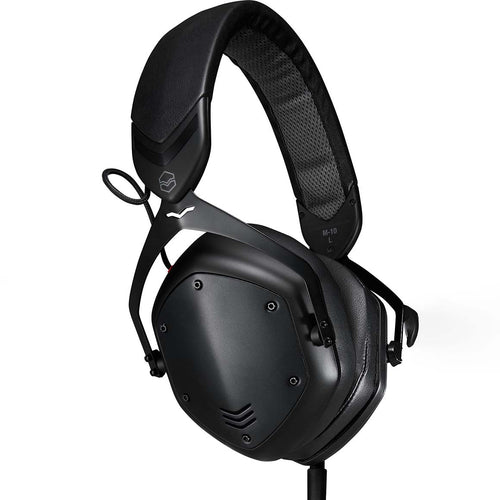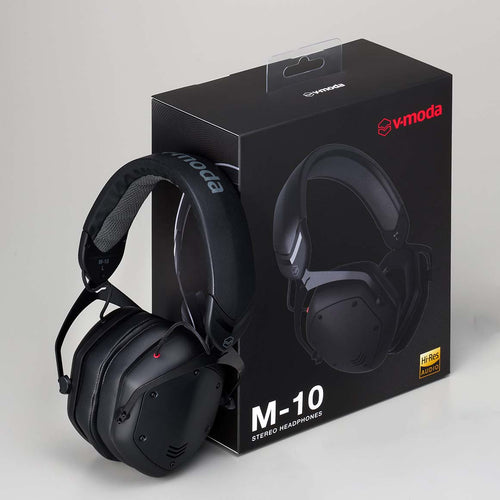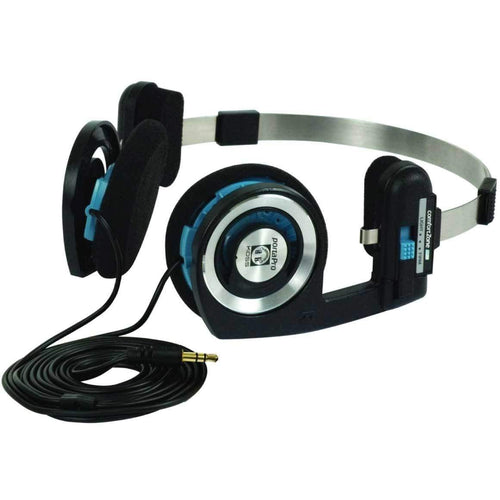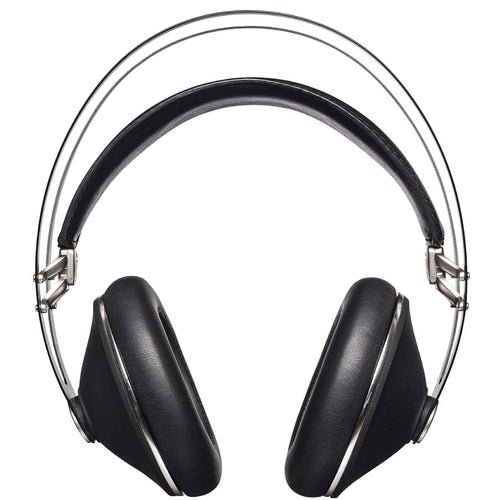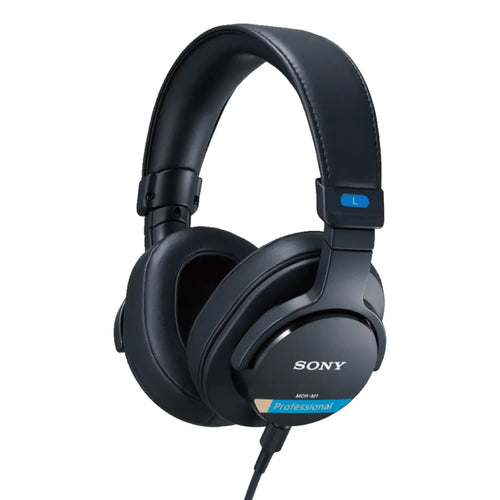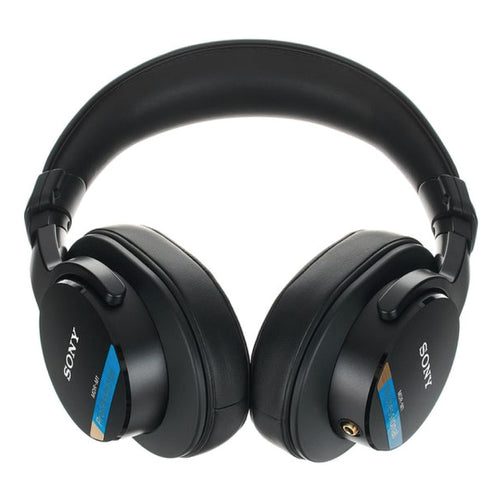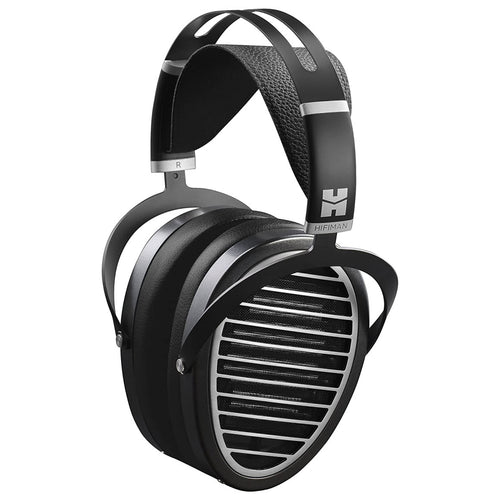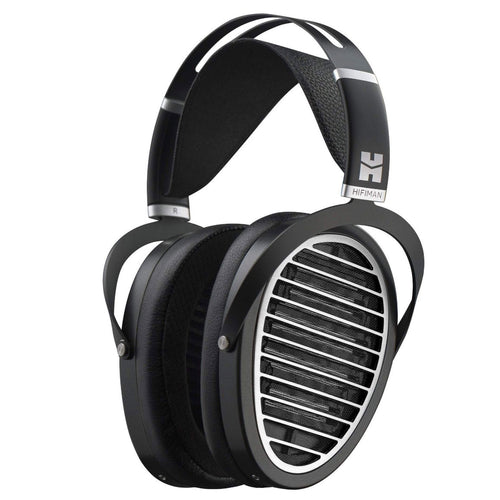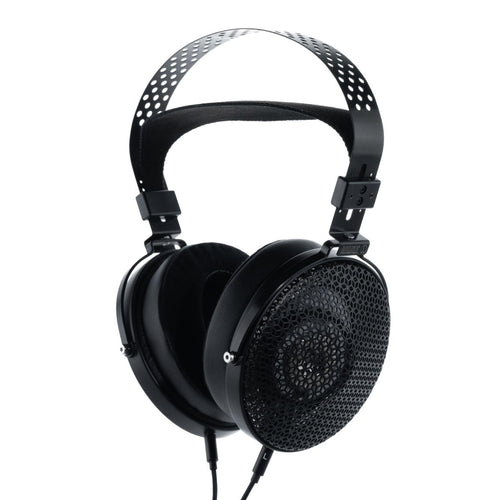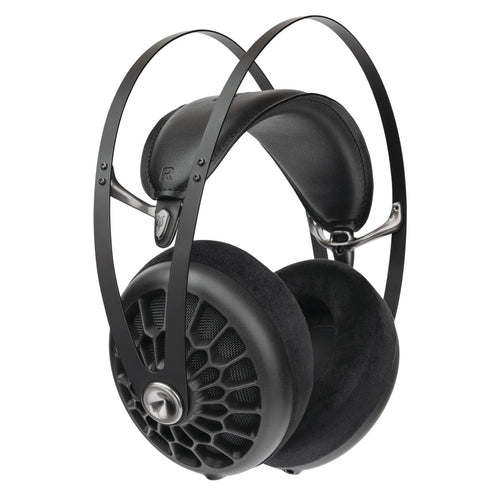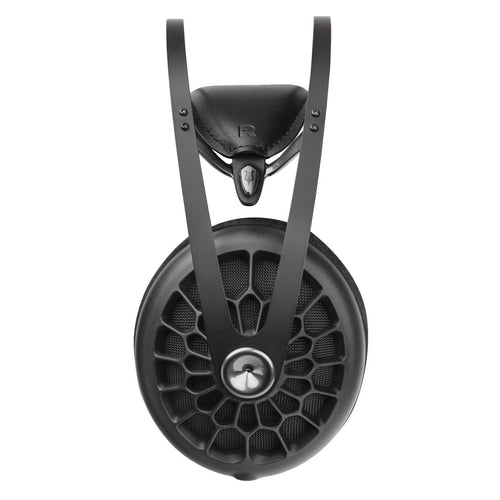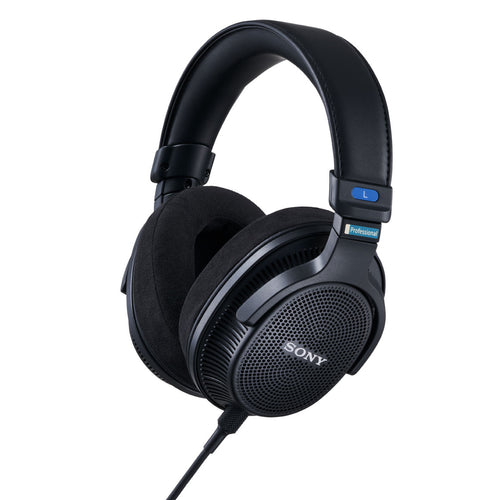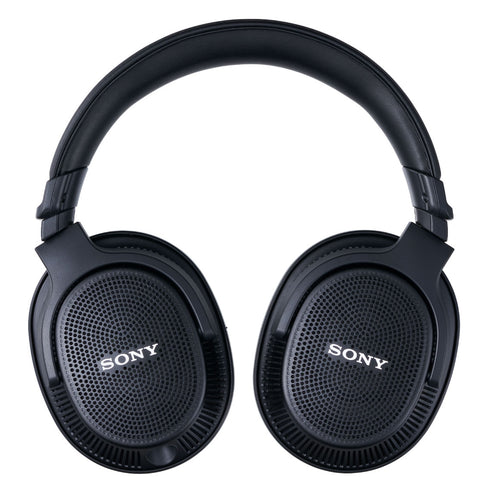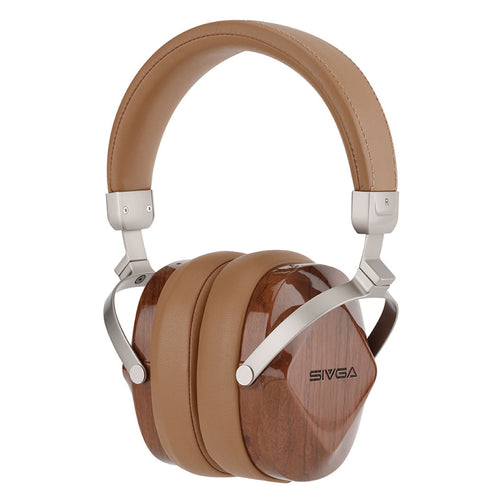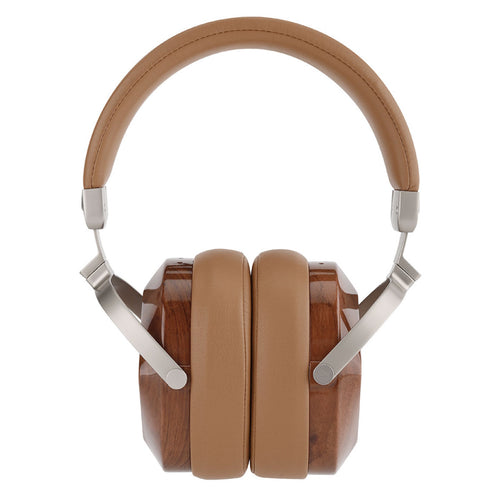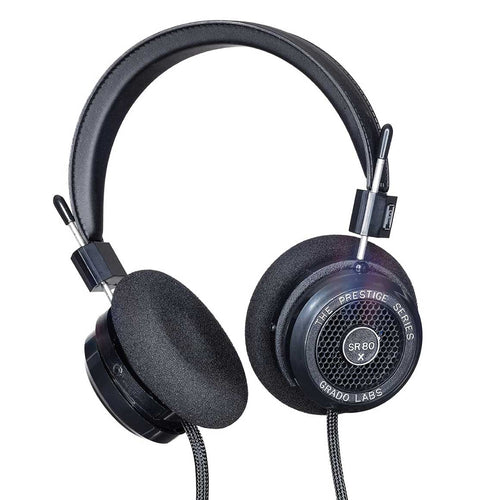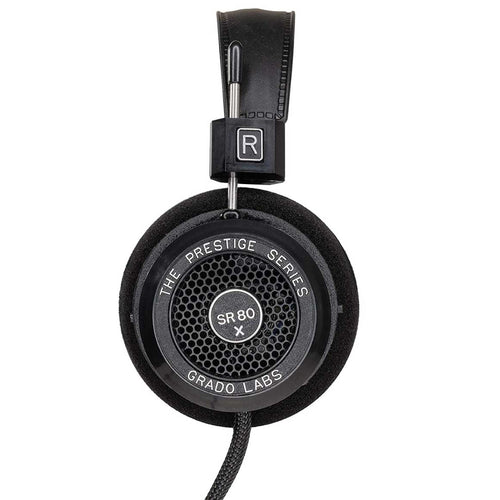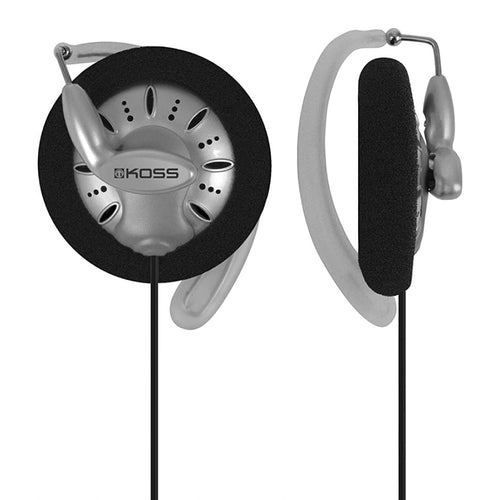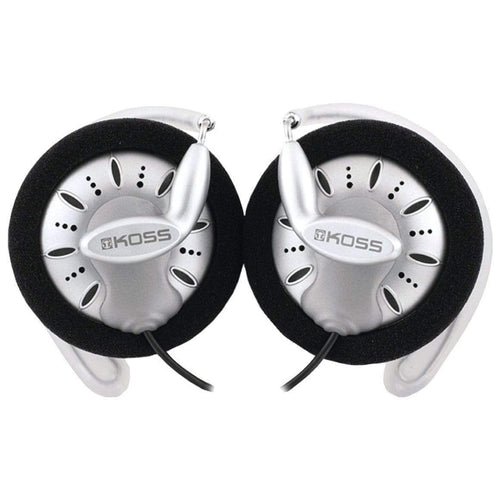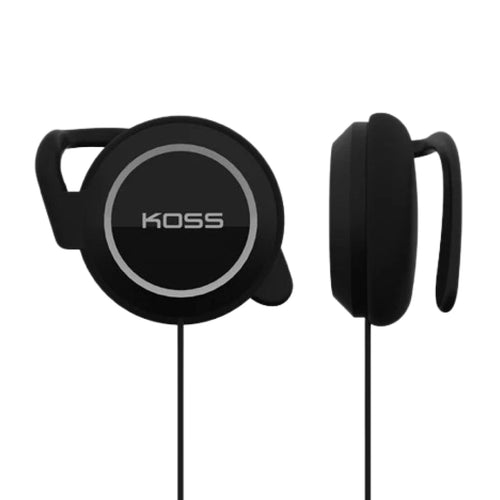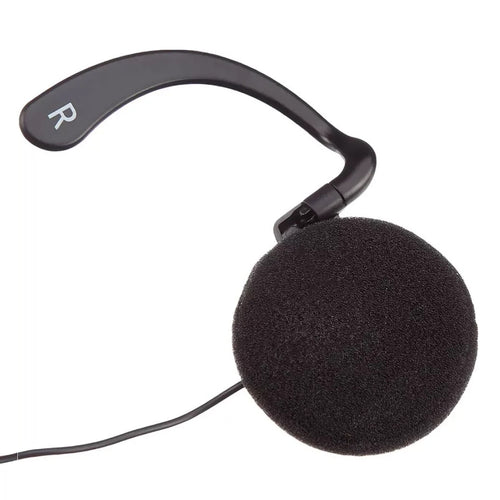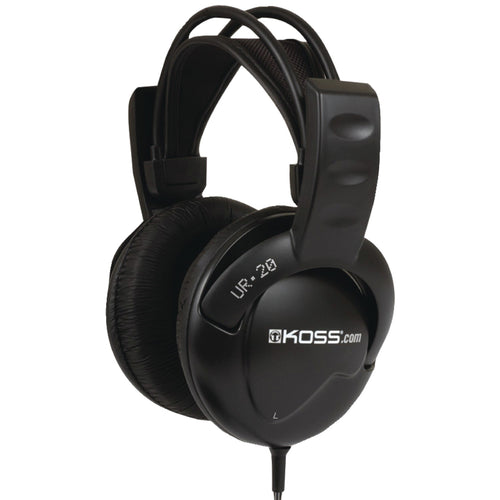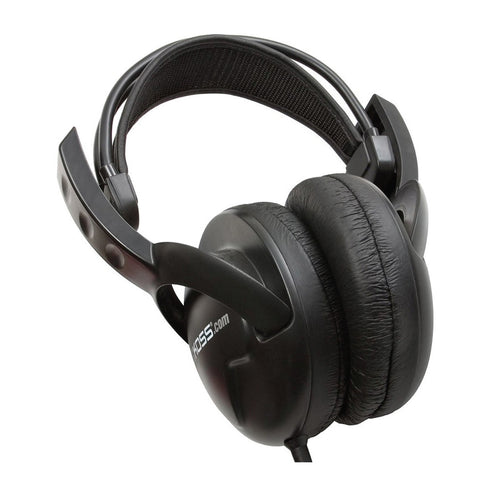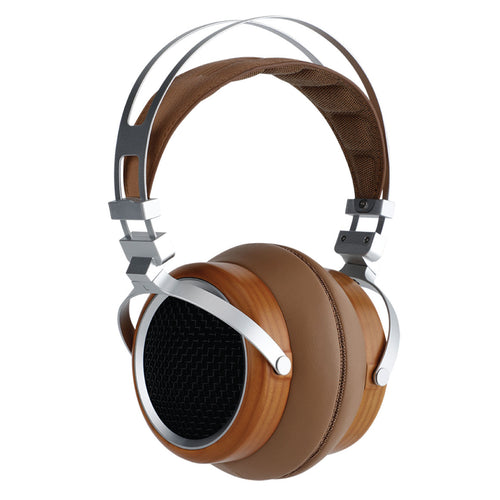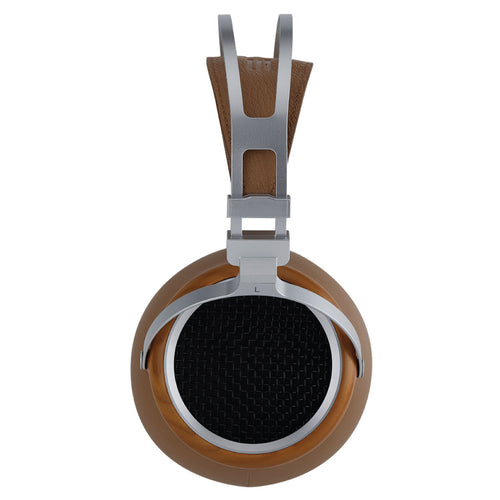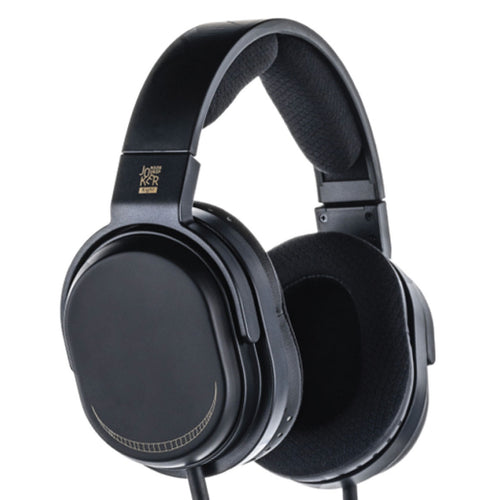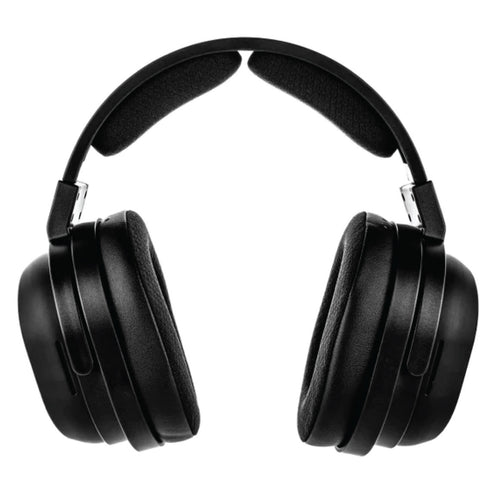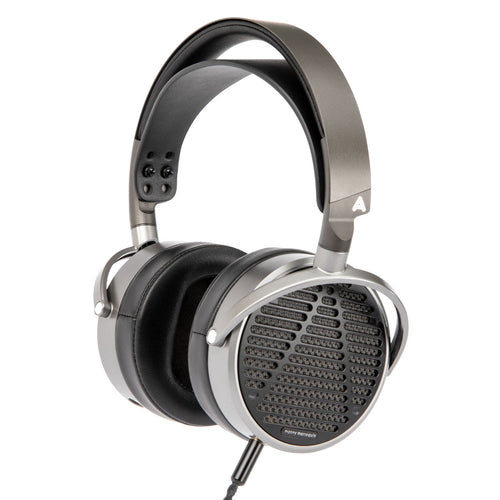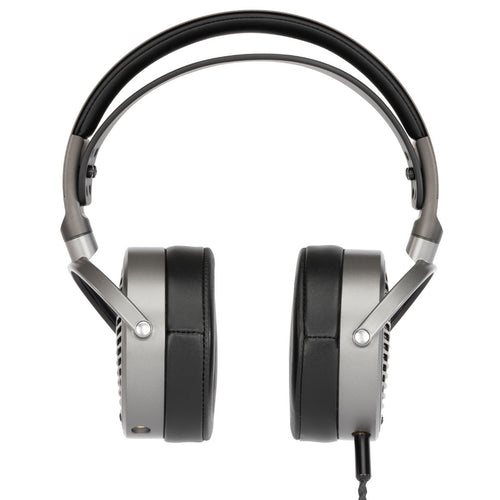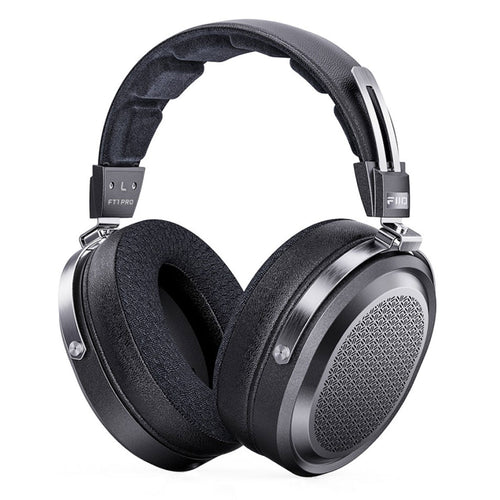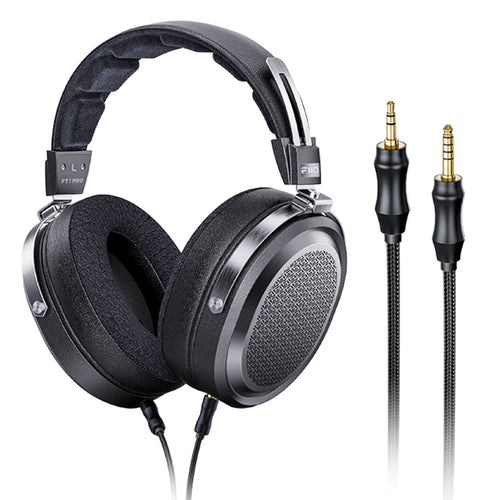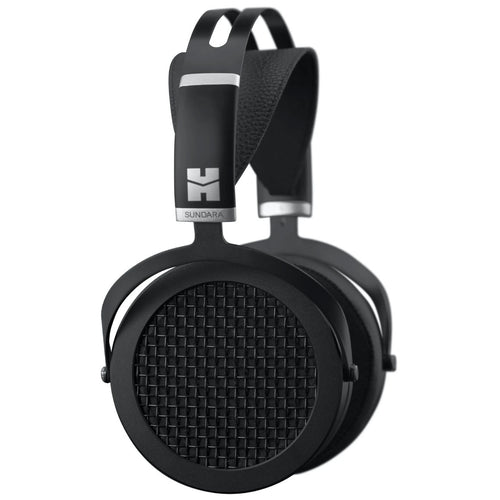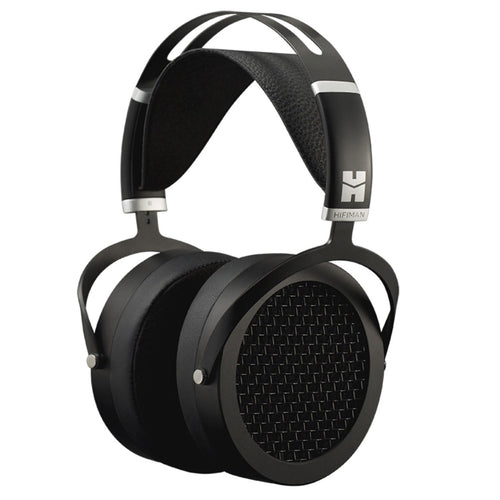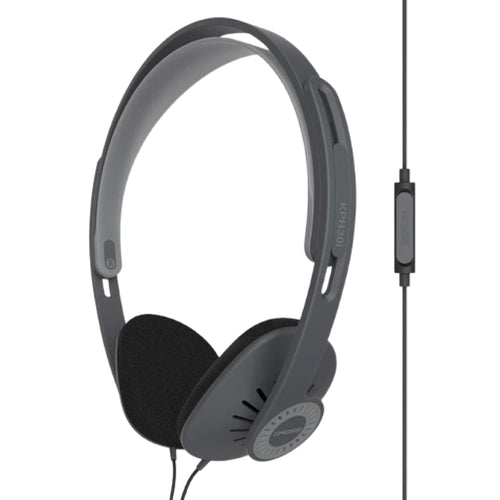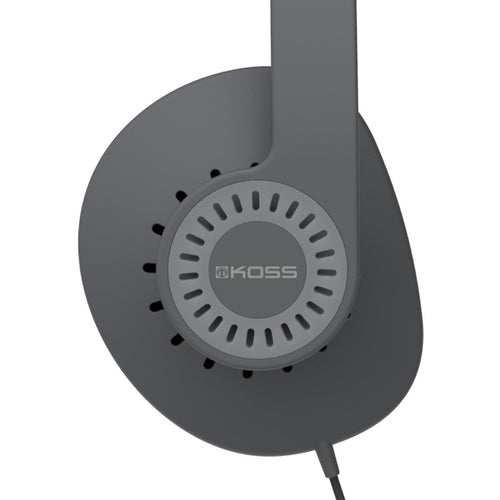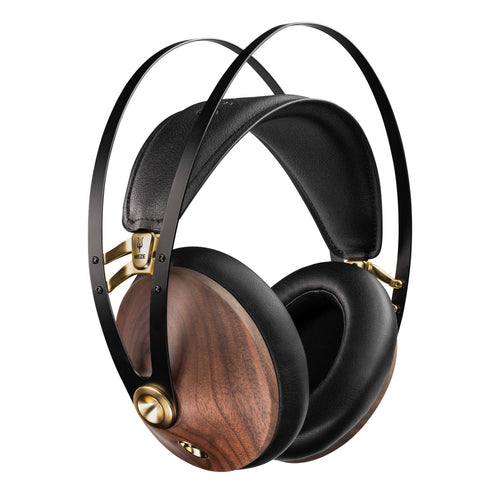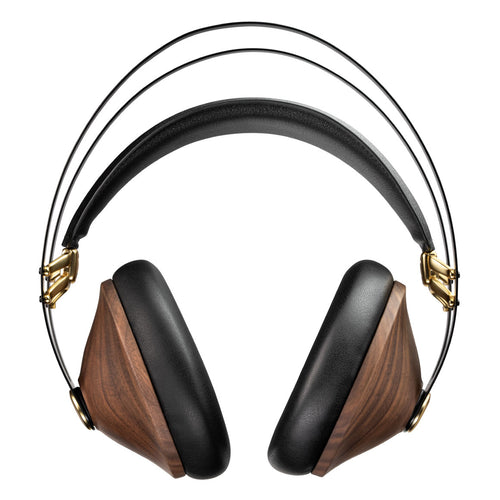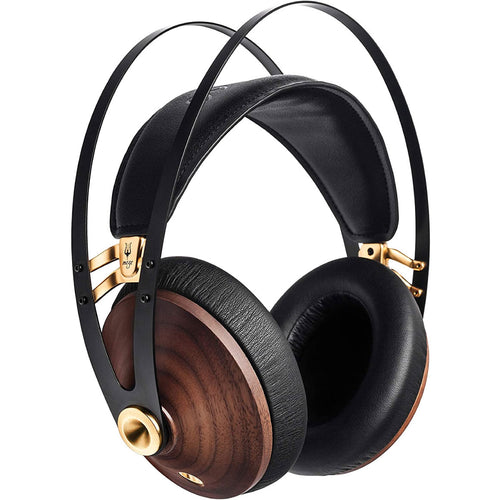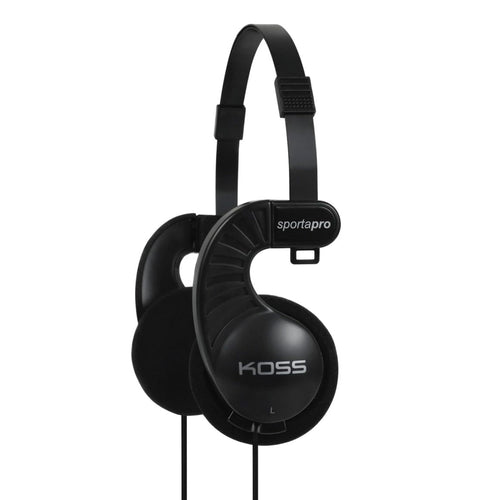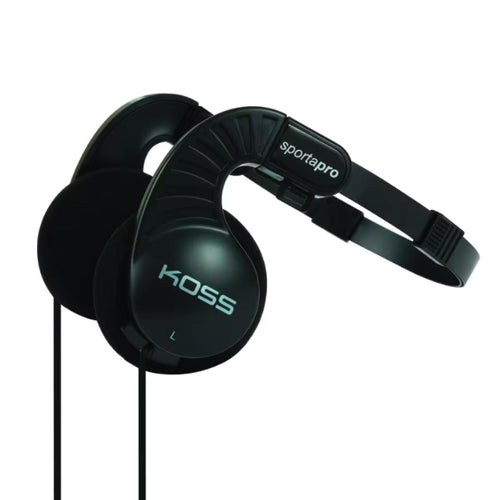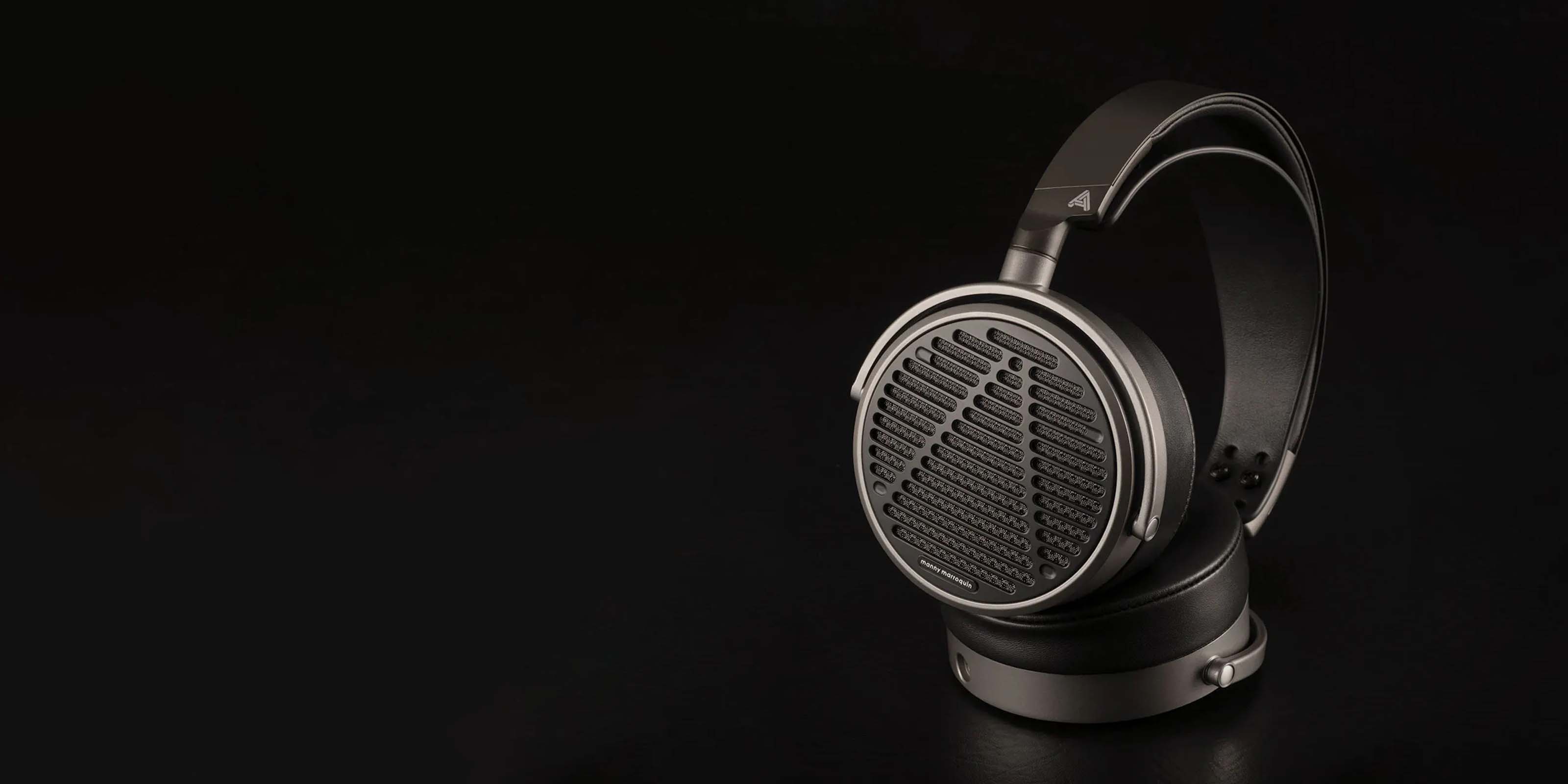
Beginner Audiophile Headphones
Filters
62 products
-
Audiophile Community Favourite
When I see a product that keeps coming up in forums, Reddit threads, and community meet-ups, I know it’s earned its place. "Audiophile Community Favourite" is our way of spotlighting the gear that real listeners — not just reviewers — swear by. 🦋
These are products that enjoy a sort of cult following for all the right reasons: consistently great tuning, build, and value. They're the kind of recommendations you'd get from a friend deep in the hobby. If you're the type who likes going with a proven crowd-pleaser, these picks are beloved by thousands of ears.
When you see '🦋 Audiophile Community Favourite' products, expect reliable recommendations backed by passionate users, often refined over years of trust and love from the community.
-
Incredibly Popular
Some things deserve all the attention ⭐!
I've found that when something becomes incredibly popular in the audio world, it's usually for very good reasons. This exceptional audio gear has earned widespread popularity by consistently delivering outstanding performance that resonates with listeners across diverse preferences and experiences. Think of it like that blockbuster movie that everyone loves - sometimes, universal appeal indicates genuine quality rather than just marketing hype.
The widespread acclaim isn't just about trend or marketing - it's a testament to genuine quality and performance that has been consistently demonstrated through real-world usage. This popularity has been earned through merit, delivering reliable satisfaction to countless users 📈.
When you encounter "🥇 Incredibly Popular" products, expect proven excellence validated by the collective experience of satisfied users who've made these their go-to choice.
-
Bright Sound Signature
In my experience, a bright sound signature feels like turning up the contrast on a photograph—everything becomes sharper, clearer, and more vivid. 🎨 If you love hearing every detail in a track—from cymbal crashes to breathy vocals—this tuning is where the magic lies. Bright headphones are often a go-to for instrumental, classical, or acoustic music where high-end clarity matters most. 🎻
What’s really happening is that the treble frequencies are boosted, adding crispness, sparkle, and airiness to your sound. This tuning can reveal nuances that often go unnoticed, making music sound more “alive.” But here’s the trade-off: with poor recordings or high volumes, bright headphones can sound fatiguing or even a little harsh. Still, when paired well, they’re unmatched for detail retrieval and transparency.
-
Crisp Vocals & Instruments
Vocals and instruments sound so good, it's like a warm hug !
I believe that when vocals are reproduced correctly, they should feel like the artist is performing right there with you. These headphones demonstrate exceptional prowess in reproducing clear, articulate vocals and instruments, with each element rendered in stunning detail and separation. Think of it like having front-row seats to an intimate acoustic performance where every breath, every string resonance, every subtle inflection comes through perfectly.
The natural timbre and tonal accuracy create an engaging presentation where every nuance is preserved while maintaining fatigue-free listening. Each word, note, and subtle inflection is reproduced with outstanding definition and emotional connection 🎤.
When you encounter "🍿 Crisp Vocals & Instruments" products, expect vocal excellence that brings you closer to the emotional heart of every performance. -
Sharp & Precise Details
Are you a lover of sharp and precise details 🔍?
I believe that detail retrieval is like having audio superpowers - suddenly, you hear things in familiar songs that you never knew existed. These premium headphones are meticulously engineered to deliver remarkably detailed and precise sound reproduction, capturing every subtle nuance with exceptional accuracy. Think of them like high-resolution cameras for your ears that reveal the finest textures and micro-details that most headphones simply miss.
The carefully tuned drivers and advanced acoustic design ensure even the most delicate musical elements are reproduced with stunning precision. From the gentle brush of a cymbal to the subtle resonance of acoustic instruments, these products capture and present every sonic detail with remarkable accuracy 🎯.
When you see "📌 Sharp & Precise Details" products, expect extraordinary detail resolution that reveals new layers in familiar recordings with stunning clarity and precision.
-
Perfect to Analyse Music
Delve deeper into intricate musical layers 🎼!
I believe that some headphones are like musical microscopes - they reveal details and nuances that most people never even know exist in their favourite songs. These specialised audio tools are meticulously engineered for those who seek to explore the deepest intricacies of sound, offering exceptional precision for detailed music analysis. Think of them as detective tools for music that help you uncover every hidden element in complex compositions.
These products enable you to dissect and examine every aspect of the musical landscape, from subtle instrument textures to precise timing, from delicate vocal overtones to intricate harmonic layering. They're specifically crafted for musicians, producers, and discerning audiophiles who desire profound insights into technical and artistic elements 🔬.
When you encounter "🔍 Perfect to Analyse Music" products, expect analytical precision that reveals layers of detail and musical craftsmanship you never knew existed.
TO BE RESTOCKED BY Mid January
-
Premium Economy
Sensible spending meets sophisticated quality in perfect harmony 💫.
I tend to describe premium economy products as finding that sweet spot where exceptional value meets refined performance. Think of it like business class comfort at economy prices - you're getting significantly more than what you paid for. These headphones deliver a refined listening experience that rivals more expensive alternatives, making them an intelligent choice for discerning listeners who appreciate both value and excellence.
This thoughtfully curated selection demonstrates our commitment to bringing you outstanding sound quality and robust construction without requiring a significant financial investment. Each product has been meticulously evaluated to ensure it delivers performance characteristics typically associated with higher price brackets.
When you see "💎 Premium Economy" products, expect refined audio experiences that bridge the gap between entry-level and high-end offerings, delivering impressive clarity and features at accessible price points.
-
For Budding Enthusiasts
In my experience, discovering good audio gear early on is a bit like tasting great coffee for the first time — once you've had a sip, you're hooked. "For Budding Enthusiasts" is a badge we use for products that are perfect gateways into the audiophile world. They're easy to use, not overly expensive, and give you a real taste of what good sound can be — without needing a degree in audio engineering. 🎧
These are the IEMs, headphones, and DACs that let you dip your toes into premium sound without drowning in choices. They balance performance, price, and practicality beautifully. Whether you're buying your first serious pair or helping someone else start their journey, these picks deliver satisfaction straight out of the box.
When you see '🪴 For Budding Enthusiasts' products, expect simple setups, solid sound quality, and an easy upgrade path — perfect for your first foray into better audio.
-
Warm & Smooth Sound Signature
I tend to describe a warm & smooth sound signature as the audio equivalent of a hot cup of tea on a rainy day—comforting, rich, and easy to love. It's perfect for those who prefer relaxed, fatigue-free listening that doesn’t stab you with harsh highs or overly clinical detail. ☕🎶
Technically, this means a slightly elevated bass and lower midrange, with tamed treble to prevent any sharpness. The result is a sound that's full-bodied and inviting, especially great for vocals, jazz, indie, and old-school rock. While it may not offer extreme precision, it excels in musicality and emotional warmth, making long sessions an absolute pleasure.
-
Thick Bass / Kickass Bass
When I say kickass bass, I’m talking about bass that slaps you right in the face—in the best way possible. It’s that visceral, chest-thumping low-end that makes you feel like you’re in the front row of a concert or a nightclub. If you’re into hip-hop, EDM, Bollywood beats, or anything with a deep groove, this is where the fun begins. 🔊💥
Here’s what’s going on technically: the low-frequency range is heavily emphasised, resulting in powerful sub-bass rumble and impactful mid-bass slam. This kind of tuning brings weight, warmth, and physicality to your music. The trade-off? It might mask some midrange detail or high-frequency sparkle—but for bassheads, the emotional payoff is more than worth it.
-
Ultra-Wide Sound stage
Do you wish to bring the concert hall to your ears 🏛️?
I love describing ultra-wide soundstage as "audio magic" that creates a breathtaking three-dimensional environment around your head. These specialised headphones feature an exceptionally spacious soundstage that creates the illusion you're sitting in the sweet spot of a magnificent performance venue. Think of it like teleportation technology for your ears - suddenly you're not wearing headphones, you're sitting in Carnegie Hall with perfect acoustics.
The precise instrument placement and remarkable sense of space work together to transport you directly into the music, making you feel as though you're experiencing a live performance. This creates a listening experience that's grand, enveloping, and incredibly detailed 🎭.
When you encounter "😳 Ultra-Wide Soundstage" products, expect concert hall acoustics that make you forget you're wearing headphones through sheer spaciousness and realism.
-
Perfect to Layback & Relax
In my experience, a laid-back sound is like sinking into your favorite armchair after a long day. It doesn’t push details in your face or try to overwhelm you with energy. Instead, it gives your music room to breathe and unfold naturally. Think of it like sipping a glass of smooth whisky—there’s warmth, body, and ease. These headphones or IEMs are ideal for those who want to unwind and soak in a mellow vibe, whether it's a jazz trio or acoustic singer-songwriter set. 🎧
Now, what’s actually happening here is a tuning that gently rolls off the treble and offers a warm, full low-end. The midrange stays intimate, while bass adds comfort without punch, and highs avoid fatigue, making long sessions a pleasure. You won’t get maximum detail or separation—but that’s the point. It’s not about dissecting the mix—it’s about relaxing into it. For bedtime listening or just zoning out, this is your sonic hammock. 😌
-
Value for Money
I've found that the best gear isn’t always the most expensive. Some products punch well above their weight and deliver performance that rivals higher-priced alternatives. That’s what we mean with the "Value for Money" badge. It’s our way of telling you that you’re getting something special without breaking the bank. 🥜
These products are all about maximum returns for minimal investment. You’re not just saving money — you’re gaining an audio experience that exceeds expectations. Whether it’s build quality, tuning, or bundled accessories, these picks overdeliver.
When you see '🥜 Value for Money' products, expect impressive performance at an affordable price, making them a smart pick for budget-conscious buyers or first-time audiophiles.
-
Ideal for Beginners
Lost in the vast world of audio equipment?
Don't worry, we're here to guide you 🤝! I believe that everyone's audiophile journey should start with something approachable and welcoming. These carefully selected products serve as the perfect entry point into high-quality sound, specifically chosen to help you navigate through sometimes overwhelming technical options. Think of them as your friendly neighbourhood guide who knows exactly where to start without getting lost in complex specifications.
These products strike an ideal balance between quality and accessibility, featuring user-friendly designs and straightforward functionality. They're specifically selected as the perfect starting point for your audiophile journey, offering serious performance without intimidating complexity or premium pricing that might discourage exploration.
When you encounter "🌱 Ideal for Beginners" products, expect approachable excellence - these are your stepping stones into the world of premium audio, designed to grow with your developing appreciation for great sound.
-
Extra-bass Sound Signature
When I see "Extra-Bass," I immediately think of music that you don’t just hear—you feel. If you love bass drops that rumble in your chest and beats that move your body, this tuning is for you. It’s the sound signature that turns your headphones into a mini dance floor. 🕺💣
Here’s what’s actually going on: the low-frequency range is heavily boosted, giving you that thick, punchy bass response that dominates the overall sound. It’s incredibly satisfying for genres like EDM, trap, hip-hop, or Bollywood music with heavy beats. Just know that vocals and treble may take a slight backseat, but for bassheads, that’s a small price for such exhilarating impact.
-
Thick Bass / Kickass Bass
When I say kickass bass, I’m talking about bass that slaps you right in the face—in the best way possible. It’s that visceral, chest-thumping low-end that makes you feel like you’re in the front row of a concert or a nightclub. If you’re into hip-hop, EDM, Bollywood beats, or anything with a deep groove, this is where the fun begins. 🔊💥
Here’s what’s going on technically: the low-frequency range is heavily emphasised, resulting in powerful sub-bass rumble and impactful mid-bass slam. This kind of tuning brings weight, warmth, and physicality to your music. The trade-off? It might mask some midrange detail or high-frequency sparkle—but for bassheads, the emotional payoff is more than worth it.
-
Crisp Vocals & Instruments
Vocals and instruments sound so good, it's like a warm hug !
I believe that when vocals are reproduced correctly, they should feel like the artist is performing right there with you. These headphones demonstrate exceptional prowess in reproducing clear, articulate vocals and instruments, with each element rendered in stunning detail and separation. Think of it like having front-row seats to an intimate acoustic performance where every breath, every string resonance, every subtle inflection comes through perfectly.
The natural timbre and tonal accuracy create an engaging presentation where every nuance is preserved while maintaining fatigue-free listening. Each word, note, and subtle inflection is reproduced with outstanding definition and emotional connection 🎤.
When you encounter "🍿 Crisp Vocals & Instruments" products, expect vocal excellence that brings you closer to the emotional heart of every performance. -
Smooth & Sweet Treble
Seeking something that sounds smooth and devoid of harshness 🥰? I tend to describe these headphones as having "silk-like highs" that caress your ears rather than assault them. These products are meticulously designed to deliver high frequencies that are wonderfully gentle, offering a listening experience that's both sophisticated and delightful. Think of it like the difference between premium chocolate and cheap candy - both are sweet, but one provides refined pleasure while the other can be overwhelming.
The carefully tuned treble presentation ensures musical details come through with remarkable clarity while maintaining natural, fatigue-free character. The refined high-frequency presentation maintains excellent detail and air while avoiding any hint of harshness or stridency ✨.
When you see "🍦 Smooth & Sweet Treble" products, expect refined high frequencies that deliver crisp detail with a touch of sweetness and sophistication.
-
Value for Money
I've found that the best gear isn’t always the most expensive. Some products punch well above their weight and deliver performance that rivals higher-priced alternatives. That’s what we mean with the "Value for Money" badge. It’s our way of telling you that you’re getting something special without breaking the bank. 🥜
These products are all about maximum returns for minimal investment. You’re not just saving money — you’re gaining an audio experience that exceeds expectations. Whether it’s build quality, tuning, or bundled accessories, these picks overdeliver.
When you see '🥜 Value for Money' products, expect impressive performance at an affordable price, making them a smart pick for budget-conscious buyers or first-time audiophiles.
-
Ideal for Beginners
Lost in the vast world of audio equipment?
Don't worry, we're here to guide you 🤝! I believe that everyone's audiophile journey should start with something approachable and welcoming. These carefully selected products serve as the perfect entry point into high-quality sound, specifically chosen to help you navigate through sometimes overwhelming technical options. Think of them as your friendly neighbourhood guide who knows exactly where to start without getting lost in complex specifications.
These products strike an ideal balance between quality and accessibility, featuring user-friendly designs and straightforward functionality. They're specifically selected as the perfect starting point for your audiophile journey, offering serious performance without intimidating complexity or premium pricing that might discourage exploration.
When you encounter "🌱 Ideal for Beginners" products, expect approachable excellence - these are your stepping stones into the world of premium audio, designed to grow with your developing appreciation for great sound.
-
Warm & Smooth Sound Signature
I tend to describe a warm & smooth sound signature as the audio equivalent of a hot cup of tea on a rainy day—comforting, rich, and easy to love. It's perfect for those who prefer relaxed, fatigue-free listening that doesn’t stab you with harsh highs or overly clinical detail. ☕🎶
Technically, this means a slightly elevated bass and lower midrange, with tamed treble to prevent any sharpness. The result is a sound that's full-bodied and inviting, especially great for vocals, jazz, indie, and old-school rock. While it may not offer extreme precision, it excels in musicality and emotional warmth, making long sessions an absolute pleasure.
-
Smooth & Sweet Treble
Seeking something that sounds smooth and devoid of harshness 🥰? I tend to describe these headphones as having "silk-like highs" that caress your ears rather than assault them. These products are meticulously designed to deliver high frequencies that are wonderfully gentle, offering a listening experience that's both sophisticated and delightful. Think of it like the difference between premium chocolate and cheap candy - both are sweet, but one provides refined pleasure while the other can be overwhelming.
The carefully tuned treble presentation ensures musical details come through with remarkable clarity while maintaining natural, fatigue-free character. The refined high-frequency presentation maintains excellent detail and air while avoiding any hint of harshness or stridency ✨.
When you see "🍦 Smooth & Sweet Treble" products, expect refined high frequencies that deliver crisp detail with a touch of sweetness and sophistication.
-
Ultra-Wide Sound stage
Do you wish to bring the concert hall to your ears 🏛️?
I love describing ultra-wide soundstage as "audio magic" that creates a breathtaking three-dimensional environment around your head. These specialised headphones feature an exceptionally spacious soundstage that creates the illusion you're sitting in the sweet spot of a magnificent performance venue. Think of it like teleportation technology for your ears - suddenly you're not wearing headphones, you're sitting in Carnegie Hall with perfect acoustics.
The precise instrument placement and remarkable sense of space work together to transport you directly into the music, making you feel as though you're experiencing a live performance. This creates a listening experience that's grand, enveloping, and incredibly detailed 🎭.
When you encounter "😳 Ultra-Wide Soundstage" products, expect concert hall acoustics that make you forget you're wearing headphones through sheer spaciousness and realism.
-
Perfect to Layback & Relax
In my experience, a laid-back sound is like sinking into your favorite armchair after a long day. It doesn’t push details in your face or try to overwhelm you with energy. Instead, it gives your music room to breathe and unfold naturally. Think of it like sipping a glass of smooth whisky—there’s warmth, body, and ease. These headphones or IEMs are ideal for those who want to unwind and soak in a mellow vibe, whether it's a jazz trio or acoustic singer-songwriter set. 🎧
Now, what’s actually happening here is a tuning that gently rolls off the treble and offers a warm, full low-end. The midrange stays intimate, while bass adds comfort without punch, and highs avoid fatigue, making long sessions a pleasure. You won’t get maximum detail or separation—but that’s the point. It’s not about dissecting the mix—it’s about relaxing into it. For bedtime listening or just zoning out, this is your sonic hammock. 😌
-
Value for Money
I've found that the best gear isn’t always the most expensive. Some products punch well above their weight and deliver performance that rivals higher-priced alternatives. That’s what we mean with the "Value for Money" badge. It’s our way of telling you that you’re getting something special without breaking the bank. 🥜
These products are all about maximum returns for minimal investment. You’re not just saving money — you’re gaining an audio experience that exceeds expectations. Whether it’s build quality, tuning, or bundled accessories, these picks overdeliver.
When you see '🥜 Value for Money' products, expect impressive performance at an affordable price, making them a smart pick for budget-conscious buyers or first-time audiophiles.
-
Ideal for Beginners
Lost in the vast world of audio equipment?
Don't worry, we're here to guide you 🤝! I believe that everyone's audiophile journey should start with something approachable and welcoming. These carefully selected products serve as the perfect entry point into high-quality sound, specifically chosen to help you navigate through sometimes overwhelming technical options. Think of them as your friendly neighbourhood guide who knows exactly where to start without getting lost in complex specifications.
These products strike an ideal balance between quality and accessibility, featuring user-friendly designs and straightforward functionality. They're specifically selected as the perfect starting point for your audiophile journey, offering serious performance without intimidating complexity or premium pricing that might discourage exploration.
When you encounter "🌱 Ideal for Beginners" products, expect approachable excellence - these are your stepping stones into the world of premium audio, designed to grow with your developing appreciation for great sound.
-
Warm & Sparkly Sound Signature
In my experience, Warm & Sparkly 🍯 is one of the most musical and emotionally satisfying tunings you’ll come across. I like to think of it like a vintage tube amp with fairy lights—you get that cozy, golden warmth in the lows and mids, but with enough shimmer up top to keep things lively 🍯. This tuning enhances the body of instruments and vocals, giving them a rich, full texture, while also adding just the right amount of sparkle in the treble to make details pop. It’s a go-to for those who want to feel both emotion and excitement in their music—perfect for soul, indie, acoustic, or even modern pop.
Here’s what’s actually happening: the mid-bass and lower midrange are gently elevated, giving the sound a rounded, lush character, while the upper treble (around 8–10kHz) is also lifted slightly for brilliance and air. The result is a sound that feels smooth yet detailed, without harshness or fatigue. You’ll notice vocals have weight and emotion, cymbals have a natural sheen, and instruments feel both rich and crisp. The trade-off? If you're coming from a flat or analytical signature, this might feel a touch coloured—but that’s what makes it so engaging. It’s an inviting sound that flatters almost every genre 🎶.
When you see '🍯 Warm & Sparkly' products, expect a lush, emotionally rich sound with just enough treble shine, ideal for listeners who love warmth without losing clarity.
-
Thick Bass / Kickass Bass
When I say kickass bass, I’m talking about bass that slaps you right in the face—in the best way possible. It’s that visceral, chest-thumping low-end that makes you feel like you’re in the front row of a concert or a nightclub. If you’re into hip-hop, EDM, Bollywood beats, or anything with a deep groove, this is where the fun begins. 🔊💥
Here’s what’s going on technically: the low-frequency range is heavily emphasised, resulting in powerful sub-bass rumble and impactful mid-bass slam. This kind of tuning brings weight, warmth, and physicality to your music. The trade-off? It might mask some midrange detail or high-frequency sparkle—but for bassheads, the emotional payoff is more than worth it.
-
Smooth & Sweet Treble
Seeking something that sounds smooth and devoid of harshness 🥰? I tend to describe these headphones as having "silk-like highs" that caress your ears rather than assault them. These products are meticulously designed to deliver high frequencies that are wonderfully gentle, offering a listening experience that's both sophisticated and delightful. Think of it like the difference between premium chocolate and cheap candy - both are sweet, but one provides refined pleasure while the other can be overwhelming.
The carefully tuned treble presentation ensures musical details come through with remarkable clarity while maintaining natural, fatigue-free character. The refined high-frequency presentation maintains excellent detail and air while avoiding any hint of harshness or stridency ✨.
When you see "🍦 Smooth & Sweet Treble" products, expect refined high frequencies that deliver crisp detail with a touch of sweetness and sophistication.
-
Perfect to Layback & Relax
In my experience, a laid-back sound is like sinking into your favorite armchair after a long day. It doesn’t push details in your face or try to overwhelm you with energy. Instead, it gives your music room to breathe and unfold naturally. Think of it like sipping a glass of smooth whisky—there’s warmth, body, and ease. These headphones or IEMs are ideal for those who want to unwind and soak in a mellow vibe, whether it's a jazz trio or acoustic singer-songwriter set. 🎧
Now, what’s actually happening here is a tuning that gently rolls off the treble and offers a warm, full low-end. The midrange stays intimate, while bass adds comfort without punch, and highs avoid fatigue, making long sessions a pleasure. You won’t get maximum detail or separation—but that’s the point. It’s not about dissecting the mix—it’s about relaxing into it. For bedtime listening or just zoning out, this is your sonic hammock. 😌
-
Value for Money
I've found that the best gear isn’t always the most expensive. Some products punch well above their weight and deliver performance that rivals higher-priced alternatives. That’s what we mean with the "Value for Money" badge. It’s our way of telling you that you’re getting something special without breaking the bank. 🥜
These products are all about maximum returns for minimal investment. You’re not just saving money — you’re gaining an audio experience that exceeds expectations. Whether it’s build quality, tuning, or bundled accessories, these picks overdeliver.
When you see '🥜 Value for Money' products, expect impressive performance at an affordable price, making them a smart pick for budget-conscious buyers or first-time audiophiles.
-
For Budding Enthusiasts
In my experience, discovering good audio gear early on is a bit like tasting great coffee for the first time — once you've had a sip, you're hooked. "For Budding Enthusiasts" is a badge we use for products that are perfect gateways into the audiophile world. They're easy to use, not overly expensive, and give you a real taste of what good sound can be — without needing a degree in audio engineering. 🎧
These are the IEMs, headphones, and DACs that let you dip your toes into premium sound without drowning in choices. They balance performance, price, and practicality beautifully. Whether you're buying your first serious pair or helping someone else start their journey, these picks deliver satisfaction straight out of the box.
When you see '🪴 For Budding Enthusiasts' products, expect simple setups, solid sound quality, and an easy upgrade path — perfect for your first foray into better audio.
-
V-shaped Sound Signature
I love describing V-shaped sound as the audio equivalent of extra toppings on a pizza—more bass and treble, with a little less midrange in between. It’s fun, energetic, and instantly engaging. If you enjoy music that thumps and sparkles, this is the sound signature that grabs your attention and doesn't let go. 🔊
What’s technically happening is that both the low and high frequencies are emphasised, while the midrange is slightly recessed. This gives you punchy bass, crisp vocals, and sparkling highs, which works especially well with pop, EDM, and hip-hop. The trade-off? Some detail in vocals or instruments might take a backseat. But for everyday listening, V-shaped sound is addictive and thrilling.
-
Ultra-Wide Sound stage
Do you wish to bring the concert hall to your ears 🏛️?
I love describing ultra-wide soundstage as "audio magic" that creates a breathtaking three-dimensional environment around your head. These specialised headphones feature an exceptionally spacious soundstage that creates the illusion you're sitting in the sweet spot of a magnificent performance venue. Think of it like teleportation technology for your ears - suddenly you're not wearing headphones, you're sitting in Carnegie Hall with perfect acoustics.
The precise instrument placement and remarkable sense of space work together to transport you directly into the music, making you feel as though you're experiencing a live performance. This creates a listening experience that's grand, enveloping, and incredibly detailed 🎭.
When you encounter "😳 Ultra-Wide Soundstage" products, expect concert hall acoustics that make you forget you're wearing headphones through sheer spaciousness and realism.
-
Crisp Vocals & Instruments
Vocals and instruments sound so good, it's like a warm hug !
I believe that when vocals are reproduced correctly, they should feel like the artist is performing right there with you. These headphones demonstrate exceptional prowess in reproducing clear, articulate vocals and instruments, with each element rendered in stunning detail and separation. Think of it like having front-row seats to an intimate acoustic performance where every breath, every string resonance, every subtle inflection comes through perfectly.
The natural timbre and tonal accuracy create an engaging presentation where every nuance is preserved while maintaining fatigue-free listening. Each word, note, and subtle inflection is reproduced with outstanding definition and emotional connection 🎤.
When you encounter "🍿 Crisp Vocals & Instruments" products, expect vocal excellence that brings you closer to the emotional heart of every performance. -
Perfect to Layback & Relax
In my experience, a laid-back sound is like sinking into your favorite armchair after a long day. It doesn’t push details in your face or try to overwhelm you with energy. Instead, it gives your music room to breathe and unfold naturally. Think of it like sipping a glass of smooth whisky—there’s warmth, body, and ease. These headphones or IEMs are ideal for those who want to unwind and soak in a mellow vibe, whether it's a jazz trio or acoustic singer-songwriter set. 🎧
Now, what’s actually happening here is a tuning that gently rolls off the treble and offers a warm, full low-end. The midrange stays intimate, while bass adds comfort without punch, and highs avoid fatigue, making long sessions a pleasure. You won’t get maximum detail or separation—but that’s the point. It’s not about dissecting the mix—it’s about relaxing into it. For bedtime listening or just zoning out, this is your sonic hammock. 😌
-
Value for Money
I've found that the best gear isn’t always the most expensive. Some products punch well above their weight and deliver performance that rivals higher-priced alternatives. That’s what we mean with the "Value for Money" badge. It’s our way of telling you that you’re getting something special without breaking the bank. 🥜
These products are all about maximum returns for minimal investment. You’re not just saving money — you’re gaining an audio experience that exceeds expectations. Whether it’s build quality, tuning, or bundled accessories, these picks overdeliver.
When you see '🥜 Value for Money' products, expect impressive performance at an affordable price, making them a smart pick for budget-conscious buyers or first-time audiophiles.
-
For Budding Enthusiasts
In my experience, discovering good audio gear early on is a bit like tasting great coffee for the first time — once you've had a sip, you're hooked. "For Budding Enthusiasts" is a badge we use for products that are perfect gateways into the audiophile world. They're easy to use, not overly expensive, and give you a real taste of what good sound can be — without needing a degree in audio engineering. 🎧
These are the IEMs, headphones, and DACs that let you dip your toes into premium sound without drowning in choices. They balance performance, price, and practicality beautifully. Whether you're buying your first serious pair or helping someone else start their journey, these picks deliver satisfaction straight out of the box.
When you see '🪴 For Budding Enthusiasts' products, expect simple setups, solid sound quality, and an easy upgrade path — perfect for your first foray into better audio.
-
Flat Sound Signature
I tend to describe a flat sound signature as the “studio monitor” of headphones—what goes in is what comes out. 🎚️ There’s no added flavour or colouration; it’s a true-to-source representation. Audiophiles and sound engineers who value neutrality and precision often gravitate toward this kind of tuning.
Here’s what’s actually happening: the entire frequency response is tuned to be as even as possible, so bass, mids, and treble are all balanced without any emphasis. This makes flat-sounding gear ideal for critical listening, mixing, or mastering, where accuracy matters more than excitement. But for casual listeners, it might feel a bit “boring.” That said, a well-done flat tuning can reveal the soul of a song like no other. 🎧
-
Crisp Vocals & Instruments
Vocals and instruments sound so good, it's like a warm hug !
I believe that when vocals are reproduced correctly, they should feel like the artist is performing right there with you. These headphones demonstrate exceptional prowess in reproducing clear, articulate vocals and instruments, with each element rendered in stunning detail and separation. Think of it like having front-row seats to an intimate acoustic performance where every breath, every string resonance, every subtle inflection comes through perfectly.
The natural timbre and tonal accuracy create an engaging presentation where every nuance is preserved while maintaining fatigue-free listening. Each word, note, and subtle inflection is reproduced with outstanding definition and emotional connection 🎤.
When you encounter "🍿 Crisp Vocals & Instruments" products, expect vocal excellence that brings you closer to the emotional heart of every performance. -
Smooth & Sweet Treble
Seeking something that sounds smooth and devoid of harshness 🥰? I tend to describe these headphones as having "silk-like highs" that caress your ears rather than assault them. These products are meticulously designed to deliver high frequencies that are wonderfully gentle, offering a listening experience that's both sophisticated and delightful. Think of it like the difference between premium chocolate and cheap candy - both are sweet, but one provides refined pleasure while the other can be overwhelming.
The carefully tuned treble presentation ensures musical details come through with remarkable clarity while maintaining natural, fatigue-free character. The refined high-frequency presentation maintains excellent detail and air while avoiding any hint of harshness or stridency ✨.
When you see "🍦 Smooth & Sweet Treble" products, expect refined high frequencies that deliver crisp detail with a touch of sweetness and sophistication.
-
Perfect to Analyse Music
Delve deeper into intricate musical layers 🎼!
I believe that some headphones are like musical microscopes - they reveal details and nuances that most people never even know exist in their favourite songs. These specialised audio tools are meticulously engineered for those who seek to explore the deepest intricacies of sound, offering exceptional precision for detailed music analysis. Think of them as detective tools for music that help you uncover every hidden element in complex compositions.
These products enable you to dissect and examine every aspect of the musical landscape, from subtle instrument textures to precise timing, from delicate vocal overtones to intricate harmonic layering. They're specifically crafted for musicians, producers, and discerning audiophiles who desire profound insights into technical and artistic elements 🔬.
When you encounter "🔍 Perfect to Analyse Music" products, expect analytical precision that reveals layers of detail and musical craftsmanship you never knew existed.
-
Value for Money
I've found that the best gear isn’t always the most expensive. Some products punch well above their weight and deliver performance that rivals higher-priced alternatives. That’s what we mean with the "Value for Money" badge. It’s our way of telling you that you’re getting something special without breaking the bank. 🥜
These products are all about maximum returns for minimal investment. You’re not just saving money — you’re gaining an audio experience that exceeds expectations. Whether it’s build quality, tuning, or bundled accessories, these picks overdeliver.
When you see '🥜 Value for Money' products, expect impressive performance at an affordable price, making them a smart pick for budget-conscious buyers or first-time audiophiles.
-
For Budding Enthusiasts
In my experience, discovering good audio gear early on is a bit like tasting great coffee for the first time — once you've had a sip, you're hooked. "For Budding Enthusiasts" is a badge we use for products that are perfect gateways into the audiophile world. They're easy to use, not overly expensive, and give you a real taste of what good sound can be — without needing a degree in audio engineering. 🎧
These are the IEMs, headphones, and DACs that let you dip your toes into premium sound without drowning in choices. They balance performance, price, and practicality beautifully. Whether you're buying your first serious pair or helping someone else start their journey, these picks deliver satisfaction straight out of the box.
When you see '🪴 For Budding Enthusiasts' products, expect simple setups, solid sound quality, and an easy upgrade path — perfect for your first foray into better audio.
-
Warm & Sparkly Sound Signature
In my experience, Warm & Sparkly 🍯 is one of the most musical and emotionally satisfying tunings you’ll come across. I like to think of it like a vintage tube amp with fairy lights—you get that cozy, golden warmth in the lows and mids, but with enough shimmer up top to keep things lively 🍯. This tuning enhances the body of instruments and vocals, giving them a rich, full texture, while also adding just the right amount of sparkle in the treble to make details pop. It’s a go-to for those who want to feel both emotion and excitement in their music—perfect for soul, indie, acoustic, or even modern pop.
Here’s what’s actually happening: the mid-bass and lower midrange are gently elevated, giving the sound a rounded, lush character, while the upper treble (around 8–10kHz) is also lifted slightly for brilliance and air. The result is a sound that feels smooth yet detailed, without harshness or fatigue. You’ll notice vocals have weight and emotion, cymbals have a natural sheen, and instruments feel both rich and crisp. The trade-off? If you're coming from a flat or analytical signature, this might feel a touch coloured—but that’s what makes it so engaging. It’s an inviting sound that flatters almost every genre 🎶.
When you see '🍯 Warm & Sparkly' products, expect a lush, emotionally rich sound with just enough treble shine, ideal for listeners who love warmth without losing clarity.
-
Thick Bass / Kickass Bass
When I say kickass bass, I’m talking about bass that slaps you right in the face—in the best way possible. It’s that visceral, chest-thumping low-end that makes you feel like you’re in the front row of a concert or a nightclub. If you’re into hip-hop, EDM, Bollywood beats, or anything with a deep groove, this is where the fun begins. 🔊💥
Here’s what’s going on technically: the low-frequency range is heavily emphasised, resulting in powerful sub-bass rumble and impactful mid-bass slam. This kind of tuning brings weight, warmth, and physicality to your music. The trade-off? It might mask some midrange detail or high-frequency sparkle—but for bassheads, the emotional payoff is more than worth it.
-
Layered and Nuanced Sound
Imagine sitting in the second row of a grand music hall 🎼, where each instrument's placement creates a vivid sonic landscape before you. I believe these headphones recreate that precise spatial positioning, allowing you to distinctly perceive where each instrument would be on an imaginary stage. Think of it like watching an orchestra conductor - you can follow each section independently while appreciating how they work together in perfect harmony. The layered presentation ensures every element occupies its own distinct space while contributing to the whole.
This audio equipment creates a detailed listening experience where musical notes, overtones, and reverberations shine through clearly, keeping complex passages distinct and well-separated. The tuning excels at revealing subtle interplay between instruments and the natural ambiance of recording spaces 🎯.
When you see "🍰 Layered and Nuanced Sound" products, expect intricate soundscapes that reveal the depth, complexity, and artistry in your favorite music with exceptional clarity.
-
Sharp & Precise Details
Are you a lover of sharp and precise details 🔍?
I believe that detail retrieval is like having audio superpowers - suddenly, you hear things in familiar songs that you never knew existed. These premium headphones are meticulously engineered to deliver remarkably detailed and precise sound reproduction, capturing every subtle nuance with exceptional accuracy. Think of them like high-resolution cameras for your ears that reveal the finest textures and micro-details that most headphones simply miss.
The carefully tuned drivers and advanced acoustic design ensure even the most delicate musical elements are reproduced with stunning precision. From the gentle brush of a cymbal to the subtle resonance of acoustic instruments, these products capture and present every sonic detail with remarkable accuracy 🎯.
When you see "📌 Sharp & Precise Details" products, expect extraordinary detail resolution that reveals new layers in familiar recordings with stunning clarity and precision.
-
For Budding Enthusiasts
In my experience, discovering good audio gear early on is a bit like tasting great coffee for the first time — once you've had a sip, you're hooked. "For Budding Enthusiasts" is a badge we use for products that are perfect gateways into the audiophile world. They're easy to use, not overly expensive, and give you a real taste of what good sound can be — without needing a degree in audio engineering. 🎧
These are the IEMs, headphones, and DACs that let you dip your toes into premium sound without drowning in choices. They balance performance, price, and practicality beautifully. Whether you're buying your first serious pair or helping someone else start their journey, these picks deliver satisfaction straight out of the box.
When you see '🪴 For Budding Enthusiasts' products, expect simple setups, solid sound quality, and an easy upgrade path — perfect for your first foray into better audio.
-
No content found for icon handle: neutral-sparkle-sound-collection
-
Crisp Vocals & Instruments
Vocals and instruments sound so good, it's like a warm hug !
I believe that when vocals are reproduced correctly, they should feel like the artist is performing right there with you. These headphones demonstrate exceptional prowess in reproducing clear, articulate vocals and instruments, with each element rendered in stunning detail and separation. Think of it like having front-row seats to an intimate acoustic performance where every breath, every string resonance, every subtle inflection comes through perfectly.
The natural timbre and tonal accuracy create an engaging presentation where every nuance is preserved while maintaining fatigue-free listening. Each word, note, and subtle inflection is reproduced with outstanding definition and emotional connection 🎤.
When you encounter "🍿 Crisp Vocals & Instruments" products, expect vocal excellence that brings you closer to the emotional heart of every performance. -
Sharp & Precise Details
Are you a lover of sharp and precise details 🔍?
I believe that detail retrieval is like having audio superpowers - suddenly, you hear things in familiar songs that you never knew existed. These premium headphones are meticulously engineered to deliver remarkably detailed and precise sound reproduction, capturing every subtle nuance with exceptional accuracy. Think of them like high-resolution cameras for your ears that reveal the finest textures and micro-details that most headphones simply miss.
The carefully tuned drivers and advanced acoustic design ensure even the most delicate musical elements are reproduced with stunning precision. From the gentle brush of a cymbal to the subtle resonance of acoustic instruments, these products capture and present every sonic detail with remarkable accuracy 🎯.
When you see "📌 Sharp & Precise Details" products, expect extraordinary detail resolution that reveals new layers in familiar recordings with stunning clarity and precision.
-
Perfect to Analyse Music
Delve deeper into intricate musical layers 🎼!
I believe that some headphones are like musical microscopes - they reveal details and nuances that most people never even know exist in their favourite songs. These specialised audio tools are meticulously engineered for those who seek to explore the deepest intricacies of sound, offering exceptional precision for detailed music analysis. Think of them as detective tools for music that help you uncover every hidden element in complex compositions.
These products enable you to dissect and examine every aspect of the musical landscape, from subtle instrument textures to precise timing, from delicate vocal overtones to intricate harmonic layering. They're specifically crafted for musicians, producers, and discerning audiophiles who desire profound insights into technical and artistic elements 🔬.
When you encounter "🔍 Perfect to Analyse Music" products, expect analytical precision that reveals layers of detail and musical craftsmanship you never knew existed.
-
Layered and Nuanced Sound
Imagine sitting in the second row of a grand music hall 🎼, where each instrument's placement creates a vivid sonic landscape before you. I believe these headphones recreate that precise spatial positioning, allowing you to distinctly perceive where each instrument would be on an imaginary stage. Think of it like watching an orchestra conductor - you can follow each section independently while appreciating how they work together in perfect harmony. The layered presentation ensures every element occupies its own distinct space while contributing to the whole.
This audio equipment creates a detailed listening experience where musical notes, overtones, and reverberations shine through clearly, keeping complex passages distinct and well-separated. The tuning excels at revealing subtle interplay between instruments and the natural ambiance of recording spaces 🎯.
When you see "🍰 Layered and Nuanced Sound" products, expect intricate soundscapes that reveal the depth, complexity, and artistry in your favorite music with exceptional clarity.
-
Ideal for Beginners
Lost in the vast world of audio equipment?
Don't worry, we're here to guide you 🤝! I believe that everyone's audiophile journey should start with something approachable and welcoming. These carefully selected products serve as the perfect entry point into high-quality sound, specifically chosen to help you navigate through sometimes overwhelming technical options. Think of them as your friendly neighbourhood guide who knows exactly where to start without getting lost in complex specifications.
These products strike an ideal balance between quality and accessibility, featuring user-friendly designs and straightforward functionality. They're specifically selected as the perfect starting point for your audiophile journey, offering serious performance without intimidating complexity or premium pricing that might discourage exploration.
When you encounter "🌱 Ideal for Beginners" products, expect approachable excellence - these are your stepping stones into the world of premium audio, designed to grow with your developing appreciation for great sound.
-
No content found for icon handle: neutral-bass-sound-collection
-
Thick Bass / Kickass Bass
When I say kickass bass, I’m talking about bass that slaps you right in the face—in the best way possible. It’s that visceral, chest-thumping low-end that makes you feel like you’re in the front row of a concert or a nightclub. If you’re into hip-hop, EDM, Bollywood beats, or anything with a deep groove, this is where the fun begins. 🔊💥
Here’s what’s going on technically: the low-frequency range is heavily emphasised, resulting in powerful sub-bass rumble and impactful mid-bass slam. This kind of tuning brings weight, warmth, and physicality to your music. The trade-off? It might mask some midrange detail or high-frequency sparkle—but for bassheads, the emotional payoff is more than worth it.
-
Crisp Vocals & Instruments
Vocals and instruments sound so good, it's like a warm hug !
I believe that when vocals are reproduced correctly, they should feel like the artist is performing right there with you. These headphones demonstrate exceptional prowess in reproducing clear, articulate vocals and instruments, with each element rendered in stunning detail and separation. Think of it like having front-row seats to an intimate acoustic performance where every breath, every string resonance, every subtle inflection comes through perfectly.
The natural timbre and tonal accuracy create an engaging presentation where every nuance is preserved while maintaining fatigue-free listening. Each word, note, and subtle inflection is reproduced with outstanding definition and emotional connection 🎤.
When you encounter "🍿 Crisp Vocals & Instruments" products, expect vocal excellence that brings you closer to the emotional heart of every performance. -
Smooth & Sweet Treble
Seeking something that sounds smooth and devoid of harshness 🥰? I tend to describe these headphones as having "silk-like highs" that caress your ears rather than assault them. These products are meticulously designed to deliver high frequencies that are wonderfully gentle, offering a listening experience that's both sophisticated and delightful. Think of it like the difference between premium chocolate and cheap candy - both are sweet, but one provides refined pleasure while the other can be overwhelming.
The carefully tuned treble presentation ensures musical details come through with remarkable clarity while maintaining natural, fatigue-free character. The refined high-frequency presentation maintains excellent detail and air while avoiding any hint of harshness or stridency ✨.
When you see "🍦 Smooth & Sweet Treble" products, expect refined high frequencies that deliver crisp detail with a touch of sweetness and sophistication.
-
Perfect to Analyse Music
Delve deeper into intricate musical layers 🎼!
I believe that some headphones are like musical microscopes - they reveal details and nuances that most people never even know exist in their favourite songs. These specialised audio tools are meticulously engineered for those who seek to explore the deepest intricacies of sound, offering exceptional precision for detailed music analysis. Think of them as detective tools for music that help you uncover every hidden element in complex compositions.
These products enable you to dissect and examine every aspect of the musical landscape, from subtle instrument textures to precise timing, from delicate vocal overtones to intricate harmonic layering. They're specifically crafted for musicians, producers, and discerning audiophiles who desire profound insights into technical and artistic elements 🔬.
When you encounter "🔍 Perfect to Analyse Music" products, expect analytical precision that reveals layers of detail and musical craftsmanship you never knew existed.
-
Ideal for Beginners
Lost in the vast world of audio equipment?
Don't worry, we're here to guide you 🤝! I believe that everyone's audiophile journey should start with something approachable and welcoming. These carefully selected products serve as the perfect entry point into high-quality sound, specifically chosen to help you navigate through sometimes overwhelming technical options. Think of them as your friendly neighbourhood guide who knows exactly where to start without getting lost in complex specifications.
These products strike an ideal balance between quality and accessibility, featuring user-friendly designs and straightforward functionality. They're specifically selected as the perfect starting point for your audiophile journey, offering serious performance without intimidating complexity or premium pricing that might discourage exploration.
When you encounter "🌱 Ideal for Beginners" products, expect approachable excellence - these are your stepping stones into the world of premium audio, designed to grow with your developing appreciation for great sound.
-
Incredibly Popular
Some things deserve all the attention ⭐!
I've found that when something becomes incredibly popular in the audio world, it's usually for very good reasons. This exceptional audio gear has earned widespread popularity by consistently delivering outstanding performance that resonates with listeners across diverse preferences and experiences. Think of it like that blockbuster movie that everyone loves - sometimes, universal appeal indicates genuine quality rather than just marketing hype.
The widespread acclaim isn't just about trend or marketing - it's a testament to genuine quality and performance that has been consistently demonstrated through real-world usage. This popularity has been earned through merit, delivering reliable satisfaction to countless users 📈.
When you encounter "🥇 Incredibly Popular" products, expect proven excellence validated by the collective experience of satisfied users who've made these their go-to choice.
-
Bright Sound Signature
In my experience, a bright sound signature feels like turning up the contrast on a photograph—everything becomes sharper, clearer, and more vivid. 🎨 If you love hearing every detail in a track—from cymbal crashes to breathy vocals—this tuning is where the magic lies. Bright headphones are often a go-to for instrumental, classical, or acoustic music where high-end clarity matters most. 🎻
What’s really happening is that the treble frequencies are boosted, adding crispness, sparkle, and airiness to your sound. This tuning can reveal nuances that often go unnoticed, making music sound more “alive.” But here’s the trade-off: with poor recordings or high volumes, bright headphones can sound fatiguing or even a little harsh. Still, when paired well, they’re unmatched for detail retrieval and transparency.
-
Sharp & Precise Details
Are you a lover of sharp and precise details 🔍?
I believe that detail retrieval is like having audio superpowers - suddenly, you hear things in familiar songs that you never knew existed. These premium headphones are meticulously engineered to deliver remarkably detailed and precise sound reproduction, capturing every subtle nuance with exceptional accuracy. Think of them like high-resolution cameras for your ears that reveal the finest textures and micro-details that most headphones simply miss.
The carefully tuned drivers and advanced acoustic design ensure even the most delicate musical elements are reproduced with stunning precision. From the gentle brush of a cymbal to the subtle resonance of acoustic instruments, these products capture and present every sonic detail with remarkable accuracy 🎯.
When you see "📌 Sharp & Precise Details" products, expect extraordinary detail resolution that reveals new layers in familiar recordings with stunning clarity and precision.
-
Layered and Nuanced Sound
Imagine sitting in the second row of a grand music hall 🎼, where each instrument's placement creates a vivid sonic landscape before you. I believe these headphones recreate that precise spatial positioning, allowing you to distinctly perceive where each instrument would be on an imaginary stage. Think of it like watching an orchestra conductor - you can follow each section independently while appreciating how they work together in perfect harmony. The layered presentation ensures every element occupies its own distinct space while contributing to the whole.
This audio equipment creates a detailed listening experience where musical notes, overtones, and reverberations shine through clearly, keeping complex passages distinct and well-separated. The tuning excels at revealing subtle interplay between instruments and the natural ambiance of recording spaces 🎯.
When you see "🍰 Layered and Nuanced Sound" products, expect intricate soundscapes that reveal the depth, complexity, and artistry in your favorite music with exceptional clarity.
-
Perfect to Analyse Music
Delve deeper into intricate musical layers 🎼!
I believe that some headphones are like musical microscopes - they reveal details and nuances that most people never even know exist in their favourite songs. These specialised audio tools are meticulously engineered for those who seek to explore the deepest intricacies of sound, offering exceptional precision for detailed music analysis. Think of them as detective tools for music that help you uncover every hidden element in complex compositions.
These products enable you to dissect and examine every aspect of the musical landscape, from subtle instrument textures to precise timing, from delicate vocal overtones to intricate harmonic layering. They're specifically crafted for musicians, producers, and discerning audiophiles who desire profound insights into technical and artistic elements 🔬.
When you encounter "🔍 Perfect to Analyse Music" products, expect analytical precision that reveals layers of detail and musical craftsmanship you never knew existed.
-
Value for Money
I've found that the best gear isn’t always the most expensive. Some products punch well above their weight and deliver performance that rivals higher-priced alternatives. That’s what we mean with the "Value for Money" badge. It’s our way of telling you that you’re getting something special without breaking the bank. 🥜
These products are all about maximum returns for minimal investment. You’re not just saving money — you’re gaining an audio experience that exceeds expectations. Whether it’s build quality, tuning, or bundled accessories, these picks overdeliver.
When you see '🥜 Value for Money' products, expect impressive performance at an affordable price, making them a smart pick for budget-conscious buyers or first-time audiophiles.
-
Ideal for Beginners
Lost in the vast world of audio equipment?
Don't worry, we're here to guide you 🤝! I believe that everyone's audiophile journey should start with something approachable and welcoming. These carefully selected products serve as the perfect entry point into high-quality sound, specifically chosen to help you navigate through sometimes overwhelming technical options. Think of them as your friendly neighbourhood guide who knows exactly where to start without getting lost in complex specifications.
These products strike an ideal balance between quality and accessibility, featuring user-friendly designs and straightforward functionality. They're specifically selected as the perfect starting point for your audiophile journey, offering serious performance without intimidating complexity or premium pricing that might discourage exploration.
When you encounter "🌱 Ideal for Beginners" products, expect approachable excellence - these are your stepping stones into the world of premium audio, designed to grow with your developing appreciation for great sound.
-
Warm & Smooth Sound Signature
I tend to describe a warm & smooth sound signature as the audio equivalent of a hot cup of tea on a rainy day—comforting, rich, and easy to love. It's perfect for those who prefer relaxed, fatigue-free listening that doesn’t stab you with harsh highs or overly clinical detail. ☕🎶
Technically, this means a slightly elevated bass and lower midrange, with tamed treble to prevent any sharpness. The result is a sound that's full-bodied and inviting, especially great for vocals, jazz, indie, and old-school rock. While it may not offer extreme precision, it excels in musicality and emotional warmth, making long sessions an absolute pleasure.
-
Crisp Vocals & Instruments
Vocals and instruments sound so good, it's like a warm hug !
I believe that when vocals are reproduced correctly, they should feel like the artist is performing right there with you. These headphones demonstrate exceptional prowess in reproducing clear, articulate vocals and instruments, with each element rendered in stunning detail and separation. Think of it like having front-row seats to an intimate acoustic performance where every breath, every string resonance, every subtle inflection comes through perfectly.
The natural timbre and tonal accuracy create an engaging presentation where every nuance is preserved while maintaining fatigue-free listening. Each word, note, and subtle inflection is reproduced with outstanding definition and emotional connection 🎤.
When you encounter "🍿 Crisp Vocals & Instruments" products, expect vocal excellence that brings you closer to the emotional heart of every performance. -
Sharp & Precise Details
Are you a lover of sharp and precise details 🔍?
I believe that detail retrieval is like having audio superpowers - suddenly, you hear things in familiar songs that you never knew existed. These premium headphones are meticulously engineered to deliver remarkably detailed and precise sound reproduction, capturing every subtle nuance with exceptional accuracy. Think of them like high-resolution cameras for your ears that reveal the finest textures and micro-details that most headphones simply miss.
The carefully tuned drivers and advanced acoustic design ensure even the most delicate musical elements are reproduced with stunning precision. From the gentle brush of a cymbal to the subtle resonance of acoustic instruments, these products capture and present every sonic detail with remarkable accuracy 🎯.
When you see "📌 Sharp & Precise Details" products, expect extraordinary detail resolution that reveals new layers in familiar recordings with stunning clarity and precision.
-
Perfect to Analyse Music
Delve deeper into intricate musical layers 🎼!
I believe that some headphones are like musical microscopes - they reveal details and nuances that most people never even know exist in their favourite songs. These specialised audio tools are meticulously engineered for those who seek to explore the deepest intricacies of sound, offering exceptional precision for detailed music analysis. Think of them as detective tools for music that help you uncover every hidden element in complex compositions.
These products enable you to dissect and examine every aspect of the musical landscape, from subtle instrument textures to precise timing, from delicate vocal overtones to intricate harmonic layering. They're specifically crafted for musicians, producers, and discerning audiophiles who desire profound insights into technical and artistic elements 🔬.
When you encounter "🔍 Perfect to Analyse Music" products, expect analytical precision that reveals layers of detail and musical craftsmanship you never knew existed.
TO BE RESTOCKED BY January
-
Value for Money
I've found that the best gear isn’t always the most expensive. Some products punch well above their weight and deliver performance that rivals higher-priced alternatives. That’s what we mean with the "Value for Money" badge. It’s our way of telling you that you’re getting something special without breaking the bank. 🥜
These products are all about maximum returns for minimal investment. You’re not just saving money — you’re gaining an audio experience that exceeds expectations. Whether it’s build quality, tuning, or bundled accessories, these picks overdeliver.
When you see '🥜 Value for Money' products, expect impressive performance at an affordable price, making them a smart pick for budget-conscious buyers or first-time audiophiles.
-
Ideal for Beginners
Lost in the vast world of audio equipment?
Don't worry, we're here to guide you 🤝! I believe that everyone's audiophile journey should start with something approachable and welcoming. These carefully selected products serve as the perfect entry point into high-quality sound, specifically chosen to help you navigate through sometimes overwhelming technical options. Think of them as your friendly neighbourhood guide who knows exactly where to start without getting lost in complex specifications.
These products strike an ideal balance between quality and accessibility, featuring user-friendly designs and straightforward functionality. They're specifically selected as the perfect starting point for your audiophile journey, offering serious performance without intimidating complexity or premium pricing that might discourage exploration.
When you encounter "🌱 Ideal for Beginners" products, expect approachable excellence - these are your stepping stones into the world of premium audio, designed to grow with your developing appreciation for great sound.
-
Bright Sound Signature
In my experience, a bright sound signature feels like turning up the contrast on a photograph—everything becomes sharper, clearer, and more vivid. 🎨 If you love hearing every detail in a track—from cymbal crashes to breathy vocals—this tuning is where the magic lies. Bright headphones are often a go-to for instrumental, classical, or acoustic music where high-end clarity matters most. 🎻
What’s really happening is that the treble frequencies are boosted, adding crispness, sparkle, and airiness to your sound. This tuning can reveal nuances that often go unnoticed, making music sound more “alive.” But here’s the trade-off: with poor recordings or high volumes, bright headphones can sound fatiguing or even a little harsh. Still, when paired well, they’re unmatched for detail retrieval and transparency.
-
Ultra-Wide Sound stage
Do you wish to bring the concert hall to your ears 🏛️?
I love describing ultra-wide soundstage as "audio magic" that creates a breathtaking three-dimensional environment around your head. These specialised headphones feature an exceptionally spacious soundstage that creates the illusion you're sitting in the sweet spot of a magnificent performance venue. Think of it like teleportation technology for your ears - suddenly you're not wearing headphones, you're sitting in Carnegie Hall with perfect acoustics.
The precise instrument placement and remarkable sense of space work together to transport you directly into the music, making you feel as though you're experiencing a live performance. This creates a listening experience that's grand, enveloping, and incredibly detailed 🎭.
When you encounter "😳 Ultra-Wide Soundstage" products, expect concert hall acoustics that make you forget you're wearing headphones through sheer spaciousness and realism.
-
Crisp Vocals & Instruments
Vocals and instruments sound so good, it's like a warm hug !
I believe that when vocals are reproduced correctly, they should feel like the artist is performing right there with you. These headphones demonstrate exceptional prowess in reproducing clear, articulate vocals and instruments, with each element rendered in stunning detail and separation. Think of it like having front-row seats to an intimate acoustic performance where every breath, every string resonance, every subtle inflection comes through perfectly.
The natural timbre and tonal accuracy create an engaging presentation where every nuance is preserved while maintaining fatigue-free listening. Each word, note, and subtle inflection is reproduced with outstanding definition and emotional connection 🎤.
When you encounter "🍿 Crisp Vocals & Instruments" products, expect vocal excellence that brings you closer to the emotional heart of every performance. -
Perfect to Analyse Music
Delve deeper into intricate musical layers 🎼!
I believe that some headphones are like musical microscopes - they reveal details and nuances that most people never even know exist in their favourite songs. These specialised audio tools are meticulously engineered for those who seek to explore the deepest intricacies of sound, offering exceptional precision for detailed music analysis. Think of them as detective tools for music that help you uncover every hidden element in complex compositions.
These products enable you to dissect and examine every aspect of the musical landscape, from subtle instrument textures to precise timing, from delicate vocal overtones to intricate harmonic layering. They're specifically crafted for musicians, producers, and discerning audiophiles who desire profound insights into technical and artistic elements 🔬.
When you encounter "🔍 Perfect to Analyse Music" products, expect analytical precision that reveals layers of detail and musical craftsmanship you never knew existed.
-
Value for Money
I've found that the best gear isn’t always the most expensive. Some products punch well above their weight and deliver performance that rivals higher-priced alternatives. That’s what we mean with the "Value for Money" badge. It’s our way of telling you that you’re getting something special without breaking the bank. 🥜
These products are all about maximum returns for minimal investment. You’re not just saving money — you’re gaining an audio experience that exceeds expectations. Whether it’s build quality, tuning, or bundled accessories, these picks overdeliver.
When you see '🥜 Value for Money' products, expect impressive performance at an affordable price, making them a smart pick for budget-conscious buyers or first-time audiophiles.
-
Ideal for Beginners
Lost in the vast world of audio equipment?
Don't worry, we're here to guide you 🤝! I believe that everyone's audiophile journey should start with something approachable and welcoming. These carefully selected products serve as the perfect entry point into high-quality sound, specifically chosen to help you navigate through sometimes overwhelming technical options. Think of them as your friendly neighbourhood guide who knows exactly where to start without getting lost in complex specifications.
These products strike an ideal balance between quality and accessibility, featuring user-friendly designs and straightforward functionality. They're specifically selected as the perfect starting point for your audiophile journey, offering serious performance without intimidating complexity or premium pricing that might discourage exploration.
When you encounter "🌱 Ideal for Beginners" products, expect approachable excellence - these are your stepping stones into the world of premium audio, designed to grow with your developing appreciation for great sound.
-
No content found for icon handle: djs-collection
-
No content found for icon handle: balanced-sound-collection
-
No content found for icon handle: party-collection
-
No content found for icon handle: pumped-collection
TO BE RESTOCKED BY January
-
Value for Money
I've found that the best gear isn’t always the most expensive. Some products punch well above their weight and deliver performance that rivals higher-priced alternatives. That’s what we mean with the "Value for Money" badge. It’s our way of telling you that you’re getting something special without breaking the bank. 🥜
These products are all about maximum returns for minimal investment. You’re not just saving money — you’re gaining an audio experience that exceeds expectations. Whether it’s build quality, tuning, or bundled accessories, these picks overdeliver.
When you see '🥜 Value for Money' products, expect impressive performance at an affordable price, making them a smart pick for budget-conscious buyers or first-time audiophiles.
-
Ideal for Beginners
Lost in the vast world of audio equipment?
Don't worry, we're here to guide you 🤝! I believe that everyone's audiophile journey should start with something approachable and welcoming. These carefully selected products serve as the perfect entry point into high-quality sound, specifically chosen to help you navigate through sometimes overwhelming technical options. Think of them as your friendly neighbourhood guide who knows exactly where to start without getting lost in complex specifications.
These products strike an ideal balance between quality and accessibility, featuring user-friendly designs and straightforward functionality. They're specifically selected as the perfect starting point for your audiophile journey, offering serious performance without intimidating complexity or premium pricing that might discourage exploration.
When you encounter "🌱 Ideal for Beginners" products, expect approachable excellence - these are your stepping stones into the world of premium audio, designed to grow with your developing appreciation for great sound.
-
Warm & Smooth Sound Signature
I tend to describe a warm & smooth sound signature as the audio equivalent of a hot cup of tea on a rainy day—comforting, rich, and easy to love. It's perfect for those who prefer relaxed, fatigue-free listening that doesn’t stab you with harsh highs or overly clinical detail. ☕🎶
Technically, this means a slightly elevated bass and lower midrange, with tamed treble to prevent any sharpness. The result is a sound that's full-bodied and inviting, especially great for vocals, jazz, indie, and old-school rock. While it may not offer extreme precision, it excels in musicality and emotional warmth, making long sessions an absolute pleasure.
-
Ultra-Wide Sound stage
Do you wish to bring the concert hall to your ears 🏛️?
I love describing ultra-wide soundstage as "audio magic" that creates a breathtaking three-dimensional environment around your head. These specialised headphones feature an exceptionally spacious soundstage that creates the illusion you're sitting in the sweet spot of a magnificent performance venue. Think of it like teleportation technology for your ears - suddenly you're not wearing headphones, you're sitting in Carnegie Hall with perfect acoustics.
The precise instrument placement and remarkable sense of space work together to transport you directly into the music, making you feel as though you're experiencing a live performance. This creates a listening experience that's grand, enveloping, and incredibly detailed 🎭.
When you encounter "😳 Ultra-Wide Soundstage" products, expect concert hall acoustics that make you forget you're wearing headphones through sheer spaciousness and realism.
-
Crisp Vocals & Instruments
Vocals and instruments sound so good, it's like a warm hug !
I believe that when vocals are reproduced correctly, they should feel like the artist is performing right there with you. These headphones demonstrate exceptional prowess in reproducing clear, articulate vocals and instruments, with each element rendered in stunning detail and separation. Think of it like having front-row seats to an intimate acoustic performance where every breath, every string resonance, every subtle inflection comes through perfectly.
The natural timbre and tonal accuracy create an engaging presentation where every nuance is preserved while maintaining fatigue-free listening. Each word, note, and subtle inflection is reproduced with outstanding definition and emotional connection 🎤.
When you encounter "🍿 Crisp Vocals & Instruments" products, expect vocal excellence that brings you closer to the emotional heart of every performance. -
Perfect to Layback & Relax
In my experience, a laid-back sound is like sinking into your favorite armchair after a long day. It doesn’t push details in your face or try to overwhelm you with energy. Instead, it gives your music room to breathe and unfold naturally. Think of it like sipping a glass of smooth whisky—there’s warmth, body, and ease. These headphones or IEMs are ideal for those who want to unwind and soak in a mellow vibe, whether it's a jazz trio or acoustic singer-songwriter set. 🎧
Now, what’s actually happening here is a tuning that gently rolls off the treble and offers a warm, full low-end. The midrange stays intimate, while bass adds comfort without punch, and highs avoid fatigue, making long sessions a pleasure. You won’t get maximum detail or separation—but that’s the point. It’s not about dissecting the mix—it’s about relaxing into it. For bedtime listening or just zoning out, this is your sonic hammock. 😌
-
For Budding Enthusiasts
In my experience, discovering good audio gear early on is a bit like tasting great coffee for the first time — once you've had a sip, you're hooked. "For Budding Enthusiasts" is a badge we use for products that are perfect gateways into the audiophile world. They're easy to use, not overly expensive, and give you a real taste of what good sound can be — without needing a degree in audio engineering. 🎧
These are the IEMs, headphones, and DACs that let you dip your toes into premium sound without drowning in choices. They balance performance, price, and practicality beautifully. Whether you're buying your first serious pair or helping someone else start their journey, these picks deliver satisfaction straight out of the box.
When you see '🪴 For Budding Enthusiasts' products, expect simple setups, solid sound quality, and an easy upgrade path — perfect for your first foray into better audio.
-
Flat Sound Signature
I tend to describe a flat sound signature as the “studio monitor” of headphones—what goes in is what comes out. 🎚️ There’s no added flavour or colouration; it’s a true-to-source representation. Audiophiles and sound engineers who value neutrality and precision often gravitate toward this kind of tuning.
Here’s what’s actually happening: the entire frequency response is tuned to be as even as possible, so bass, mids, and treble are all balanced without any emphasis. This makes flat-sounding gear ideal for critical listening, mixing, or mastering, where accuracy matters more than excitement. But for casual listeners, it might feel a bit “boring.” That said, a well-done flat tuning can reveal the soul of a song like no other. 🎧
-
Ultra-Wide Sound stage
Do you wish to bring the concert hall to your ears 🏛️?
I love describing ultra-wide soundstage as "audio magic" that creates a breathtaking three-dimensional environment around your head. These specialised headphones feature an exceptionally spacious soundstage that creates the illusion you're sitting in the sweet spot of a magnificent performance venue. Think of it like teleportation technology for your ears - suddenly you're not wearing headphones, you're sitting in Carnegie Hall with perfect acoustics.
The precise instrument placement and remarkable sense of space work together to transport you directly into the music, making you feel as though you're experiencing a live performance. This creates a listening experience that's grand, enveloping, and incredibly detailed 🎭.
When you encounter "😳 Ultra-Wide Soundstage" products, expect concert hall acoustics that make you forget you're wearing headphones through sheer spaciousness and realism.
-
Crisp Vocals & Instruments
Vocals and instruments sound so good, it's like a warm hug !
I believe that when vocals are reproduced correctly, they should feel like the artist is performing right there with you. These headphones demonstrate exceptional prowess in reproducing clear, articulate vocals and instruments, with each element rendered in stunning detail and separation. Think of it like having front-row seats to an intimate acoustic performance where every breath, every string resonance, every subtle inflection comes through perfectly.
The natural timbre and tonal accuracy create an engaging presentation where every nuance is preserved while maintaining fatigue-free listening. Each word, note, and subtle inflection is reproduced with outstanding definition and emotional connection 🎤.
When you encounter "🍿 Crisp Vocals & Instruments" products, expect vocal excellence that brings you closer to the emotional heart of every performance. -
Sharp & Precise Details
Are you a lover of sharp and precise details 🔍?
I believe that detail retrieval is like having audio superpowers - suddenly, you hear things in familiar songs that you never knew existed. These premium headphones are meticulously engineered to deliver remarkably detailed and precise sound reproduction, capturing every subtle nuance with exceptional accuracy. Think of them like high-resolution cameras for your ears that reveal the finest textures and micro-details that most headphones simply miss.
The carefully tuned drivers and advanced acoustic design ensure even the most delicate musical elements are reproduced with stunning precision. From the gentle brush of a cymbal to the subtle resonance of acoustic instruments, these products capture and present every sonic detail with remarkable accuracy 🎯.
When you see "📌 Sharp & Precise Details" products, expect extraordinary detail resolution that reveals new layers in familiar recordings with stunning clarity and precision.
-
Perfect to Analyse Music
Delve deeper into intricate musical layers 🎼!
I believe that some headphones are like musical microscopes - they reveal details and nuances that most people never even know exist in their favourite songs. These specialised audio tools are meticulously engineered for those who seek to explore the deepest intricacies of sound, offering exceptional precision for detailed music analysis. Think of them as detective tools for music that help you uncover every hidden element in complex compositions.
These products enable you to dissect and examine every aspect of the musical landscape, from subtle instrument textures to precise timing, from delicate vocal overtones to intricate harmonic layering. They're specifically crafted for musicians, producers, and discerning audiophiles who desire profound insights into technical and artistic elements 🔬.
When you encounter "🔍 Perfect to Analyse Music" products, expect analytical precision that reveals layers of detail and musical craftsmanship you never knew existed.
-
Value for Money
I've found that the best gear isn’t always the most expensive. Some products punch well above their weight and deliver performance that rivals higher-priced alternatives. That’s what we mean with the "Value for Money" badge. It’s our way of telling you that you’re getting something special without breaking the bank. 🥜
These products are all about maximum returns for minimal investment. You’re not just saving money — you’re gaining an audio experience that exceeds expectations. Whether it’s build quality, tuning, or bundled accessories, these picks overdeliver.
When you see '🥜 Value for Money' products, expect impressive performance at an affordable price, making them a smart pick for budget-conscious buyers or first-time audiophiles.
-
Ideal for Beginners
Lost in the vast world of audio equipment?
Don't worry, we're here to guide you 🤝! I believe that everyone's audiophile journey should start with something approachable and welcoming. These carefully selected products serve as the perfect entry point into high-quality sound, specifically chosen to help you navigate through sometimes overwhelming technical options. Think of them as your friendly neighbourhood guide who knows exactly where to start without getting lost in complex specifications.
These products strike an ideal balance between quality and accessibility, featuring user-friendly designs and straightforward functionality. They're specifically selected as the perfect starting point for your audiophile journey, offering serious performance without intimidating complexity or premium pricing that might discourage exploration.
When you encounter "🌱 Ideal for Beginners" products, expect approachable excellence - these are your stepping stones into the world of premium audio, designed to grow with your developing appreciation for great sound.
-
Flat Sound Signature
I tend to describe a flat sound signature as the “studio monitor” of headphones—what goes in is what comes out. 🎚️ There’s no added flavour or colouration; it’s a true-to-source representation. Audiophiles and sound engineers who value neutrality and precision often gravitate toward this kind of tuning.
Here’s what’s actually happening: the entire frequency response is tuned to be as even as possible, so bass, mids, and treble are all balanced without any emphasis. This makes flat-sounding gear ideal for critical listening, mixing, or mastering, where accuracy matters more than excitement. But for casual listeners, it might feel a bit “boring.” That said, a well-done flat tuning can reveal the soul of a song like no other. 🎧
-
Ultra-Wide Sound stage
Do you wish to bring the concert hall to your ears 🏛️?
I love describing ultra-wide soundstage as "audio magic" that creates a breathtaking three-dimensional environment around your head. These specialised headphones feature an exceptionally spacious soundstage that creates the illusion you're sitting in the sweet spot of a magnificent performance venue. Think of it like teleportation technology for your ears - suddenly you're not wearing headphones, you're sitting in Carnegie Hall with perfect acoustics.
The precise instrument placement and remarkable sense of space work together to transport you directly into the music, making you feel as though you're experiencing a live performance. This creates a listening experience that's grand, enveloping, and incredibly detailed 🎭.
When you encounter "😳 Ultra-Wide Soundstage" products, expect concert hall acoustics that make you forget you're wearing headphones through sheer spaciousness and realism.
-
Crisp Vocals & Instruments
Vocals and instruments sound so good, it's like a warm hug !
I believe that when vocals are reproduced correctly, they should feel like the artist is performing right there with you. These headphones demonstrate exceptional prowess in reproducing clear, articulate vocals and instruments, with each element rendered in stunning detail and separation. Think of it like having front-row seats to an intimate acoustic performance where every breath, every string resonance, every subtle inflection comes through perfectly.
The natural timbre and tonal accuracy create an engaging presentation where every nuance is preserved while maintaining fatigue-free listening. Each word, note, and subtle inflection is reproduced with outstanding definition and emotional connection 🎤.
When you encounter "🍿 Crisp Vocals & Instruments" products, expect vocal excellence that brings you closer to the emotional heart of every performance. -
Perfect to Analyse Music
Delve deeper into intricate musical layers 🎼!
I believe that some headphones are like musical microscopes - they reveal details and nuances that most people never even know exist in their favourite songs. These specialised audio tools are meticulously engineered for those who seek to explore the deepest intricacies of sound, offering exceptional precision for detailed music analysis. Think of them as detective tools for music that help you uncover every hidden element in complex compositions.
These products enable you to dissect and examine every aspect of the musical landscape, from subtle instrument textures to precise timing, from delicate vocal overtones to intricate harmonic layering. They're specifically crafted for musicians, producers, and discerning audiophiles who desire profound insights into technical and artistic elements 🔬.
When you encounter "🔍 Perfect to Analyse Music" products, expect analytical precision that reveals layers of detail and musical craftsmanship you never knew existed.
-
Value for Money
I've found that the best gear isn’t always the most expensive. Some products punch well above their weight and deliver performance that rivals higher-priced alternatives. That’s what we mean with the "Value for Money" badge. It’s our way of telling you that you’re getting something special without breaking the bank. 🥜
These products are all about maximum returns for minimal investment. You’re not just saving money — you’re gaining an audio experience that exceeds expectations. Whether it’s build quality, tuning, or bundled accessories, these picks overdeliver.
When you see '🥜 Value for Money' products, expect impressive performance at an affordable price, making them a smart pick for budget-conscious buyers or first-time audiophiles.
-
Ideal for Beginners
Lost in the vast world of audio equipment?
Don't worry, we're here to guide you 🤝! I believe that everyone's audiophile journey should start with something approachable and welcoming. These carefully selected products serve as the perfect entry point into high-quality sound, specifically chosen to help you navigate through sometimes overwhelming technical options. Think of them as your friendly neighbourhood guide who knows exactly where to start without getting lost in complex specifications.
These products strike an ideal balance between quality and accessibility, featuring user-friendly designs and straightforward functionality. They're specifically selected as the perfect starting point for your audiophile journey, offering serious performance without intimidating complexity or premium pricing that might discourage exploration.
When you encounter "🌱 Ideal for Beginners" products, expect approachable excellence - these are your stepping stones into the world of premium audio, designed to grow with your developing appreciation for great sound.
-
Flat Sound Signature
I tend to describe a flat sound signature as the “studio monitor” of headphones—what goes in is what comes out. 🎚️ There’s no added flavour or colouration; it’s a true-to-source representation. Audiophiles and sound engineers who value neutrality and precision often gravitate toward this kind of tuning.
Here’s what’s actually happening: the entire frequency response is tuned to be as even as possible, so bass, mids, and treble are all balanced without any emphasis. This makes flat-sounding gear ideal for critical listening, mixing, or mastering, where accuracy matters more than excitement. But for casual listeners, it might feel a bit “boring.” That said, a well-done flat tuning can reveal the soul of a song like no other. 🎧
-
Ultra-Wide Sound stage
Do you wish to bring the concert hall to your ears 🏛️?
I love describing ultra-wide soundstage as "audio magic" that creates a breathtaking three-dimensional environment around your head. These specialised headphones feature an exceptionally spacious soundstage that creates the illusion you're sitting in the sweet spot of a magnificent performance venue. Think of it like teleportation technology for your ears - suddenly you're not wearing headphones, you're sitting in Carnegie Hall with perfect acoustics.
The precise instrument placement and remarkable sense of space work together to transport you directly into the music, making you feel as though you're experiencing a live performance. This creates a listening experience that's grand, enveloping, and incredibly detailed 🎭.
When you encounter "😳 Ultra-Wide Soundstage" products, expect concert hall acoustics that make you forget you're wearing headphones through sheer spaciousness and realism.
-
Crisp Vocals & Instruments
Vocals and instruments sound so good, it's like a warm hug !
I believe that when vocals are reproduced correctly, they should feel like the artist is performing right there with you. These headphones demonstrate exceptional prowess in reproducing clear, articulate vocals and instruments, with each element rendered in stunning detail and separation. Think of it like having front-row seats to an intimate acoustic performance where every breath, every string resonance, every subtle inflection comes through perfectly.
The natural timbre and tonal accuracy create an engaging presentation where every nuance is preserved while maintaining fatigue-free listening. Each word, note, and subtle inflection is reproduced with outstanding definition and emotional connection 🎤.
When you encounter "🍿 Crisp Vocals & Instruments" products, expect vocal excellence that brings you closer to the emotional heart of every performance. -
Perfect to Analyse Music
Delve deeper into intricate musical layers 🎼!
I believe that some headphones are like musical microscopes - they reveal details and nuances that most people never even know exist in their favourite songs. These specialised audio tools are meticulously engineered for those who seek to explore the deepest intricacies of sound, offering exceptional precision for detailed music analysis. Think of them as detective tools for music that help you uncover every hidden element in complex compositions.
These products enable you to dissect and examine every aspect of the musical landscape, from subtle instrument textures to precise timing, from delicate vocal overtones to intricate harmonic layering. They're specifically crafted for musicians, producers, and discerning audiophiles who desire profound insights into technical and artistic elements 🔬.
When you encounter "🔍 Perfect to Analyse Music" products, expect analytical precision that reveals layers of detail and musical craftsmanship you never knew existed.
-
Value for Money
I've found that the best gear isn’t always the most expensive. Some products punch well above their weight and deliver performance that rivals higher-priced alternatives. That’s what we mean with the "Value for Money" badge. It’s our way of telling you that you’re getting something special without breaking the bank. 🥜
These products are all about maximum returns for minimal investment. You’re not just saving money — you’re gaining an audio experience that exceeds expectations. Whether it’s build quality, tuning, or bundled accessories, these picks overdeliver.
When you see '🥜 Value for Money' products, expect impressive performance at an affordable price, making them a smart pick for budget-conscious buyers or first-time audiophiles.
-
Ideal for Beginners
Lost in the vast world of audio equipment?
Don't worry, we're here to guide you 🤝! I believe that everyone's audiophile journey should start with something approachable and welcoming. These carefully selected products serve as the perfect entry point into high-quality sound, specifically chosen to help you navigate through sometimes overwhelming technical options. Think of them as your friendly neighbourhood guide who knows exactly where to start without getting lost in complex specifications.
These products strike an ideal balance between quality and accessibility, featuring user-friendly designs and straightforward functionality. They're specifically selected as the perfect starting point for your audiophile journey, offering serious performance without intimidating complexity or premium pricing that might discourage exploration.
When you encounter "🌱 Ideal for Beginners" products, expect approachable excellence - these are your stepping stones into the world of premium audio, designed to grow with your developing appreciation for great sound.
-
Warm & Smooth Sound Signature
I tend to describe a warm & smooth sound signature as the audio equivalent of a hot cup of tea on a rainy day—comforting, rich, and easy to love. It's perfect for those who prefer relaxed, fatigue-free listening that doesn’t stab you with harsh highs or overly clinical detail. ☕🎶
Technically, this means a slightly elevated bass and lower midrange, with tamed treble to prevent any sharpness. The result is a sound that's full-bodied and inviting, especially great for vocals, jazz, indie, and old-school rock. While it may not offer extreme precision, it excels in musicality and emotional warmth, making long sessions an absolute pleasure.
-
Smooth & Sweet Treble
Seeking something that sounds smooth and devoid of harshness 🥰? I tend to describe these headphones as having "silk-like highs" that caress your ears rather than assault them. These products are meticulously designed to deliver high frequencies that are wonderfully gentle, offering a listening experience that's both sophisticated and delightful. Think of it like the difference between premium chocolate and cheap candy - both are sweet, but one provides refined pleasure while the other can be overwhelming.
The carefully tuned treble presentation ensures musical details come through with remarkable clarity while maintaining natural, fatigue-free character. The refined high-frequency presentation maintains excellent detail and air while avoiding any hint of harshness or stridency ✨.
When you see "🍦 Smooth & Sweet Treble" products, expect refined high frequencies that deliver crisp detail with a touch of sweetness and sophistication.
-
Ultra-Wide Sound stage
Do you wish to bring the concert hall to your ears 🏛️?
I love describing ultra-wide soundstage as "audio magic" that creates a breathtaking three-dimensional environment around your head. These specialised headphones feature an exceptionally spacious soundstage that creates the illusion you're sitting in the sweet spot of a magnificent performance venue. Think of it like teleportation technology for your ears - suddenly you're not wearing headphones, you're sitting in Carnegie Hall with perfect acoustics.
The precise instrument placement and remarkable sense of space work together to transport you directly into the music, making you feel as though you're experiencing a live performance. This creates a listening experience that's grand, enveloping, and incredibly detailed 🎭.
When you encounter "😳 Ultra-Wide Soundstage" products, expect concert hall acoustics that make you forget you're wearing headphones through sheer spaciousness and realism.
-
Perfect to Layback & Relax
In my experience, a laid-back sound is like sinking into your favorite armchair after a long day. It doesn’t push details in your face or try to overwhelm you with energy. Instead, it gives your music room to breathe and unfold naturally. Think of it like sipping a glass of smooth whisky—there’s warmth, body, and ease. These headphones or IEMs are ideal for those who want to unwind and soak in a mellow vibe, whether it's a jazz trio or acoustic singer-songwriter set. 🎧
Now, what’s actually happening here is a tuning that gently rolls off the treble and offers a warm, full low-end. The midrange stays intimate, while bass adds comfort without punch, and highs avoid fatigue, making long sessions a pleasure. You won’t get maximum detail or separation—but that’s the point. It’s not about dissecting the mix—it’s about relaxing into it. For bedtime listening or just zoning out, this is your sonic hammock. 😌
-
Value for Money
I've found that the best gear isn’t always the most expensive. Some products punch well above their weight and deliver performance that rivals higher-priced alternatives. That’s what we mean with the "Value for Money" badge. It’s our way of telling you that you’re getting something special without breaking the bank. 🥜
These products are all about maximum returns for minimal investment. You’re not just saving money — you’re gaining an audio experience that exceeds expectations. Whether it’s build quality, tuning, or bundled accessories, these picks overdeliver.
When you see '🥜 Value for Money' products, expect impressive performance at an affordable price, making them a smart pick for budget-conscious buyers or first-time audiophiles.
-
For Budding Enthusiasts
In my experience, discovering good audio gear early on is a bit like tasting great coffee for the first time — once you've had a sip, you're hooked. "For Budding Enthusiasts" is a badge we use for products that are perfect gateways into the audiophile world. They're easy to use, not overly expensive, and give you a real taste of what good sound can be — without needing a degree in audio engineering. 🎧
These are the IEMs, headphones, and DACs that let you dip your toes into premium sound without drowning in choices. They balance performance, price, and practicality beautifully. Whether you're buying your first serious pair or helping someone else start their journey, these picks deliver satisfaction straight out of the box.
When you see '🪴 For Budding Enthusiasts' products, expect simple setups, solid sound quality, and an easy upgrade path — perfect for your first foray into better audio.
-
Warm & Sparkly Sound Signature
In my experience, Warm & Sparkly 🍯 is one of the most musical and emotionally satisfying tunings you’ll come across. I like to think of it like a vintage tube amp with fairy lights—you get that cozy, golden warmth in the lows and mids, but with enough shimmer up top to keep things lively 🍯. This tuning enhances the body of instruments and vocals, giving them a rich, full texture, while also adding just the right amount of sparkle in the treble to make details pop. It’s a go-to for those who want to feel both emotion and excitement in their music—perfect for soul, indie, acoustic, or even modern pop.
Here’s what’s actually happening: the mid-bass and lower midrange are gently elevated, giving the sound a rounded, lush character, while the upper treble (around 8–10kHz) is also lifted slightly for brilliance and air. The result is a sound that feels smooth yet detailed, without harshness or fatigue. You’ll notice vocals have weight and emotion, cymbals have a natural sheen, and instruments feel both rich and crisp. The trade-off? If you're coming from a flat or analytical signature, this might feel a touch coloured—but that’s what makes it so engaging. It’s an inviting sound that flatters almost every genre 🎶.
When you see '🍯 Warm & Sparkly' products, expect a lush, emotionally rich sound with just enough treble shine, ideal for listeners who love warmth without losing clarity.
-
Thick Bass / Kickass Bass
When I say kickass bass, I’m talking about bass that slaps you right in the face—in the best way possible. It’s that visceral, chest-thumping low-end that makes you feel like you’re in the front row of a concert or a nightclub. If you’re into hip-hop, EDM, Bollywood beats, or anything with a deep groove, this is where the fun begins. 🔊💥
Here’s what’s going on technically: the low-frequency range is heavily emphasised, resulting in powerful sub-bass rumble and impactful mid-bass slam. This kind of tuning brings weight, warmth, and physicality to your music. The trade-off? It might mask some midrange detail or high-frequency sparkle—but for bassheads, the emotional payoff is more than worth it.
-
Crisp Vocals & Instruments
Vocals and instruments sound so good, it's like a warm hug !
I believe that when vocals are reproduced correctly, they should feel like the artist is performing right there with you. These headphones demonstrate exceptional prowess in reproducing clear, articulate vocals and instruments, with each element rendered in stunning detail and separation. Think of it like having front-row seats to an intimate acoustic performance where every breath, every string resonance, every subtle inflection comes through perfectly.
The natural timbre and tonal accuracy create an engaging presentation where every nuance is preserved while maintaining fatigue-free listening. Each word, note, and subtle inflection is reproduced with outstanding definition and emotional connection 🎤.
When you encounter "🍿 Crisp Vocals & Instruments" products, expect vocal excellence that brings you closer to the emotional heart of every performance. -
No content found for icon handle: party-collection
-
Value for Money
I've found that the best gear isn’t always the most expensive. Some products punch well above their weight and deliver performance that rivals higher-priced alternatives. That’s what we mean with the "Value for Money" badge. It’s our way of telling you that you’re getting something special without breaking the bank. 🥜
These products are all about maximum returns for minimal investment. You’re not just saving money — you’re gaining an audio experience that exceeds expectations. Whether it’s build quality, tuning, or bundled accessories, these picks overdeliver.
When you see '🥜 Value for Money' products, expect impressive performance at an affordable price, making them a smart pick for budget-conscious buyers or first-time audiophiles.
-
Ideal for Beginners
Lost in the vast world of audio equipment?
Don't worry, we're here to guide you 🤝! I believe that everyone's audiophile journey should start with something approachable and welcoming. These carefully selected products serve as the perfect entry point into high-quality sound, specifically chosen to help you navigate through sometimes overwhelming technical options. Think of them as your friendly neighbourhood guide who knows exactly where to start without getting lost in complex specifications.
These products strike an ideal balance between quality and accessibility, featuring user-friendly designs and straightforward functionality. They're specifically selected as the perfect starting point for your audiophile journey, offering serious performance without intimidating complexity or premium pricing that might discourage exploration.
When you encounter "🌱 Ideal for Beginners" products, expect approachable excellence - these are your stepping stones into the world of premium audio, designed to grow with your developing appreciation for great sound.
-
Audiophile Community Favourite
When I see a product that keeps coming up in forums, Reddit threads, and community meet-ups, I know it’s earned its place. "Audiophile Community Favourite" is our way of spotlighting the gear that real listeners — not just reviewers — swear by. 🦋
These are products that enjoy a sort of cult following for all the right reasons: consistently great tuning, build, and value. They're the kind of recommendations you'd get from a friend deep in the hobby. If you're the type who likes going with a proven crowd-pleaser, these picks are beloved by thousands of ears.
When you see '🦋 Audiophile Community Favourite' products, expect reliable recommendations backed by passionate users, often refined over years of trust and love from the community.
-
Warm & Sparkly Sound Signature
In my experience, Warm & Sparkly 🍯 is one of the most musical and emotionally satisfying tunings you’ll come across. I like to think of it like a vintage tube amp with fairy lights—you get that cozy, golden warmth in the lows and mids, but with enough shimmer up top to keep things lively 🍯. This tuning enhances the body of instruments and vocals, giving them a rich, full texture, while also adding just the right amount of sparkle in the treble to make details pop. It’s a go-to for those who want to feel both emotion and excitement in their music—perfect for soul, indie, acoustic, or even modern pop.
Here’s what’s actually happening: the mid-bass and lower midrange are gently elevated, giving the sound a rounded, lush character, while the upper treble (around 8–10kHz) is also lifted slightly for brilliance and air. The result is a sound that feels smooth yet detailed, without harshness or fatigue. You’ll notice vocals have weight and emotion, cymbals have a natural sheen, and instruments feel both rich and crisp. The trade-off? If you're coming from a flat or analytical signature, this might feel a touch coloured—but that’s what makes it so engaging. It’s an inviting sound that flatters almost every genre 🎶.
When you see '🍯 Warm & Sparkly' products, expect a lush, emotionally rich sound with just enough treble shine, ideal for listeners who love warmth without losing clarity.
-
Thick Bass / Kickass Bass
When I say kickass bass, I’m talking about bass that slaps you right in the face—in the best way possible. It’s that visceral, chest-thumping low-end that makes you feel like you’re in the front row of a concert or a nightclub. If you’re into hip-hop, EDM, Bollywood beats, or anything with a deep groove, this is where the fun begins. 🔊💥
Here’s what’s going on technically: the low-frequency range is heavily emphasised, resulting in powerful sub-bass rumble and impactful mid-bass slam. This kind of tuning brings weight, warmth, and physicality to your music. The trade-off? It might mask some midrange detail or high-frequency sparkle—but for bassheads, the emotional payoff is more than worth it.
-
Smooth & Sweet Treble
Seeking something that sounds smooth and devoid of harshness 🥰? I tend to describe these headphones as having "silk-like highs" that caress your ears rather than assault them. These products are meticulously designed to deliver high frequencies that are wonderfully gentle, offering a listening experience that's both sophisticated and delightful. Think of it like the difference between premium chocolate and cheap candy - both are sweet, but one provides refined pleasure while the other can be overwhelming.
The carefully tuned treble presentation ensures musical details come through with remarkable clarity while maintaining natural, fatigue-free character. The refined high-frequency presentation maintains excellent detail and air while avoiding any hint of harshness or stridency ✨.
When you see "🍦 Smooth & Sweet Treble" products, expect refined high frequencies that deliver crisp detail with a touch of sweetness and sophistication.
-
Value for Money
I've found that the best gear isn’t always the most expensive. Some products punch well above their weight and deliver performance that rivals higher-priced alternatives. That’s what we mean with the "Value for Money" badge. It’s our way of telling you that you’re getting something special without breaking the bank. 🥜
These products are all about maximum returns for minimal investment. You’re not just saving money — you’re gaining an audio experience that exceeds expectations. Whether it’s build quality, tuning, or bundled accessories, these picks overdeliver.
When you see '🥜 Value for Money' products, expect impressive performance at an affordable price, making them a smart pick for budget-conscious buyers or first-time audiophiles.
-
Ideal for Beginners
Lost in the vast world of audio equipment?
Don't worry, we're here to guide you 🤝! I believe that everyone's audiophile journey should start with something approachable and welcoming. These carefully selected products serve as the perfect entry point into high-quality sound, specifically chosen to help you navigate through sometimes overwhelming technical options. Think of them as your friendly neighbourhood guide who knows exactly where to start without getting lost in complex specifications.
These products strike an ideal balance between quality and accessibility, featuring user-friendly designs and straightforward functionality. They're specifically selected as the perfect starting point for your audiophile journey, offering serious performance without intimidating complexity or premium pricing that might discourage exploration.
When you encounter "🌱 Ideal for Beginners" products, expect approachable excellence - these are your stepping stones into the world of premium audio, designed to grow with your developing appreciation for great sound.
-
Warm & Smooth Sound Signature
I tend to describe a warm & smooth sound signature as the audio equivalent of a hot cup of tea on a rainy day—comforting, rich, and easy to love. It's perfect for those who prefer relaxed, fatigue-free listening that doesn’t stab you with harsh highs or overly clinical detail. ☕🎶
Technically, this means a slightly elevated bass and lower midrange, with tamed treble to prevent any sharpness. The result is a sound that's full-bodied and inviting, especially great for vocals, jazz, indie, and old-school rock. While it may not offer extreme precision, it excels in musicality and emotional warmth, making long sessions an absolute pleasure.
-
Smooth & Sweet Treble
Seeking something that sounds smooth and devoid of harshness 🥰? I tend to describe these headphones as having "silk-like highs" that caress your ears rather than assault them. These products are meticulously designed to deliver high frequencies that are wonderfully gentle, offering a listening experience that's both sophisticated and delightful. Think of it like the difference between premium chocolate and cheap candy - both are sweet, but one provides refined pleasure while the other can be overwhelming.
The carefully tuned treble presentation ensures musical details come through with remarkable clarity while maintaining natural, fatigue-free character. The refined high-frequency presentation maintains excellent detail and air while avoiding any hint of harshness or stridency ✨.
When you see "🍦 Smooth & Sweet Treble" products, expect refined high frequencies that deliver crisp detail with a touch of sweetness and sophistication.
-
Ultra-Wide Sound stage
Do you wish to bring the concert hall to your ears 🏛️?
I love describing ultra-wide soundstage as "audio magic" that creates a breathtaking three-dimensional environment around your head. These specialised headphones feature an exceptionally spacious soundstage that creates the illusion you're sitting in the sweet spot of a magnificent performance venue. Think of it like teleportation technology for your ears - suddenly you're not wearing headphones, you're sitting in Carnegie Hall with perfect acoustics.
The precise instrument placement and remarkable sense of space work together to transport you directly into the music, making you feel as though you're experiencing a live performance. This creates a listening experience that's grand, enveloping, and incredibly detailed 🎭.
When you encounter "😳 Ultra-Wide Soundstage" products, expect concert hall acoustics that make you forget you're wearing headphones through sheer spaciousness and realism.
-
Perfect to Layback & Relax
In my experience, a laid-back sound is like sinking into your favorite armchair after a long day. It doesn’t push details in your face or try to overwhelm you with energy. Instead, it gives your music room to breathe and unfold naturally. Think of it like sipping a glass of smooth whisky—there’s warmth, body, and ease. These headphones or IEMs are ideal for those who want to unwind and soak in a mellow vibe, whether it's a jazz trio or acoustic singer-songwriter set. 🎧
Now, what’s actually happening here is a tuning that gently rolls off the treble and offers a warm, full low-end. The midrange stays intimate, while bass adds comfort without punch, and highs avoid fatigue, making long sessions a pleasure. You won’t get maximum detail or separation—but that’s the point. It’s not about dissecting the mix—it’s about relaxing into it. For bedtime listening or just zoning out, this is your sonic hammock. 😌
Talking To Us Is Easy
Get in Touch with Our Team directly - We're Here to HelpWrite to Us
Prefer to drop us a line? Our team will get back to you via email within a working day.
Our customer support is available Monday to Friday: 11am - 6pm.
Write to Us
Join the Discussion
We're not the experts on everything, but our community is. Join The Indian Audiophile Forum.
Join community